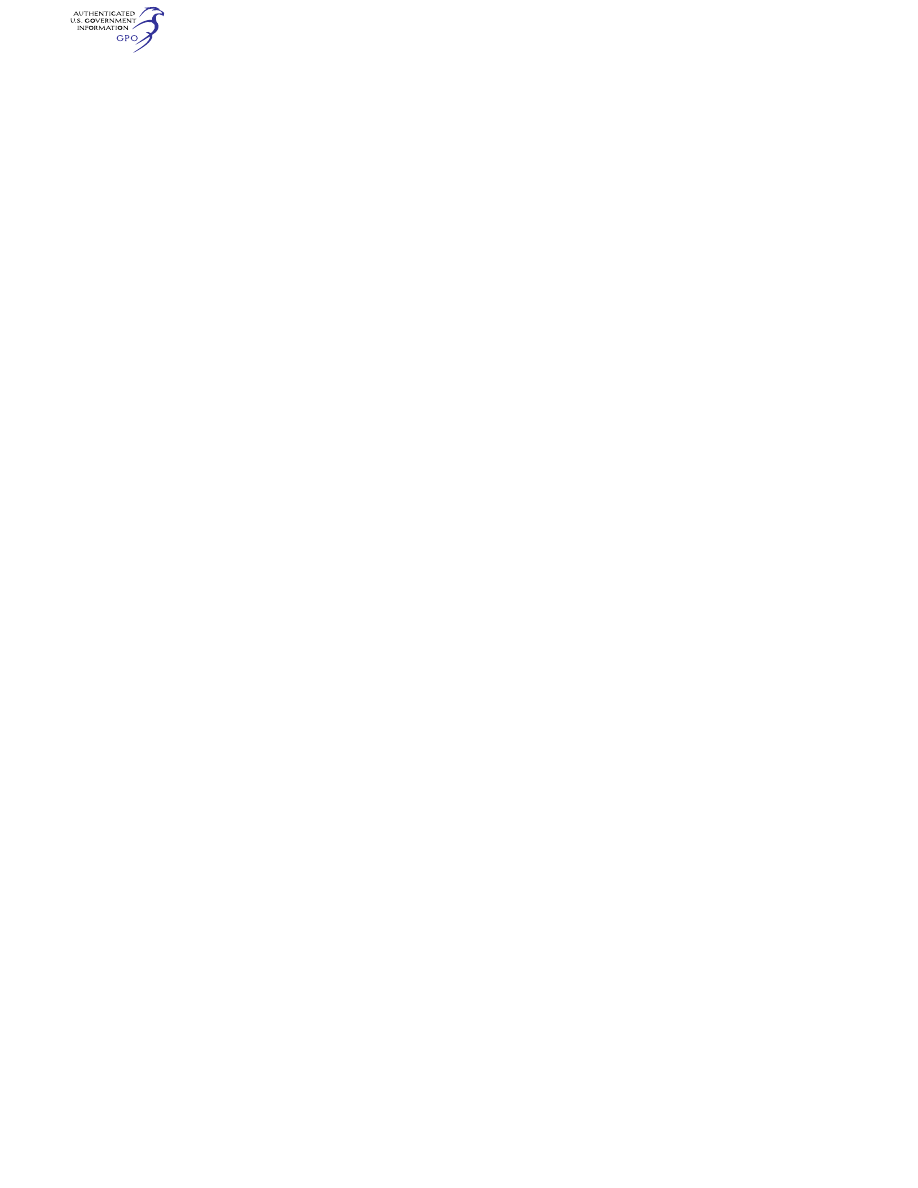
846
14 CFR Ch. I (1–1–24 Edition)
§ 39.27
§ 39.27
What do I do if the airworthi-
ness directive conflicts with the
service document on which it is
based?
In some cases an airworthiness direc-
tive incorporates by reference a manu-
facturer’s service document. In these
cases, the service document becomes
part of the airworthiness directive. In
some cases the directions in the service
document may be modified by the air-
worthiness directive. If there is a con-
flict between the service document and
the airworthiness directive, you must
follow the requirements of the air-
worthiness directive.
PART 43—MAINTENANCE, PREVEN-
TIVE MAINTENANCE, REBUILD-
ING, AND ALTERATION
Sec.
43.1
Applicability.
43.2
Records of overhaul and rebuilding.
43.3
Persons authorized to perform mainte-
nance, preventive maintenance, rebuild-
ing, and alterations.
43.5
Approval for return to service after
maintenance, preventive maintenance,
rebuilding, or alteration.
43.7
Persons authorized to approve aircraft,
airframes, aircraft engines, propellers,
appliances, or component parts for re-
turn to service after maintenance, pre-
ventive maintenance, rebuilding, or al-
teration.
43.9
Content, form, and disposition of main-
tenance, preventive maintenance, re-
building, and alteration records (except
inspections performed in accordance
with part 91, part 123, part 125,
§ 135.411(a)(1), and § 135.419 of this chap-
ter).
43.10
Disposition of life-limited aircraft
parts.
43.11
Content, form, and disposition of
records for inspections conducted under
parts 91 and 125 and §§ 135.411(a)(1) and
135.419 of this chapter.
43.12
Maintenance records: Falsification, re-
production, or alteration.
43.13
Performance rules (general).
43.15
Additional performance rules for in-
spections.
43.16
Airworthiness Limitations.
43.17
Maintenance, preventive maintenance,
and alterations performed on U.S. aero-
nautical products by certain Canadian
persons.
A
PPENDIX
A
TO
P
ART
43—M
AJOR
A
LTER
-
ATIONS
, M
AJOR
R
EPAIRS
,
AND
P
REVENTIVE
M
AINTENANCE
A
PPENDIX
B
TO
P
ART
43—R
ECORDING
OF
M
AJOR
R
EPAIRS AND
M
AJOR
A
LTERATIONS
A
PPENDIX
C
TO
P
ART
43 [R
ESERVED
]
A
PPENDIX
D
TO
P
ART
43—S
COPE AND
D
ETAIL
OF
I
TEMS
(
AS
A
PPLICABLE TO THE
P
AR
-
TICULAR
A
IRCRAFT
) T
O
B
E
I
NCLUDED
IN
A
NNUAL AND
100-H
OUR
I
NSPECTIONS
A
PPENDIX
E
TO
P
ART
43—A
LTIMETER
S
YSTEM
T
EST AND
I
NSPECTION
A
PPENDIX
F
TO
P
ART
43—ATC T
RANSPONDER
T
ESTS AND
I
NSPECTIONS
A
UTHORITY
: 42 U.S.C. 7572; 49 U.S.C. 106(f),
106(g), 40105, 40113, 44701–44702, 44704, 44707,
44709, 44711, 44713, 44715, 45303.
S
OURCE
: Docket No. 1993, 29 FR 5451, Apr.
23, 1964, unless otherwise noted.
E
DITORIAL
N
OTE
: For miscellaneous tech-
nical amendments to this part 43, see Amdt.
43–3, 31 FR 3336, Mar. 3, 1966, and Amdt. 43–
6, 31 FR 9211, July 6, 1966.
§ 43.1
Applicability.
(a) Except as provided in paragraphs
(b) and (d) of this section, this part pre-
scribes rules governing the mainte-
nance, preventive maintenance, re-
building, and alteration of any—
(1) Aircraft having a U.S. airworthi-
ness certificate;
(2) Foreign-registered civil aircraft
used in common carriage or carriage of
mail under the provisions of Part 121 or
135 of this chapter; and
(3) Airframe, aircraft engines, propel-
lers, appliances, and component parts
of such aircraft.
(b) This part does not apply to—
(1) Any aircraft for which the FAA
has issued an experimental certificate,
unless the FAA has previously issued a
different kind of airworthiness certifi-
cate for that aircraft;
(2) Any aircraft for which the FAA
has issued an experimental certificate
under the provisions of § 21.191(i)(3) of
this chapter, and the aircraft was pre-
viously issued a special airworthiness
certificate in the light-sport category
under the provisions of § 21.190 of this
chapter; or
(3) Any aircraft that is operated
under part 107 of this chapter, except
as described in § 107.140(d).
(c) This part applies to all life-lim-
ited parts that are removed from a
type certificated product, segregated,
or controlled as provided in § 43.10.
(d) This part applies to any aircraft
issued a special airworthiness certifi-
cate in the light-sport category except:
VerDate Sep<11>2014
09:06 Jun 28, 2024
Jkt 262046
PO 00000
Frm 00856
Fmt 8010
Sfmt 8010
Y:\SGML\262046.XXX
262046
jspears on DSK121TN23PROD with CFR
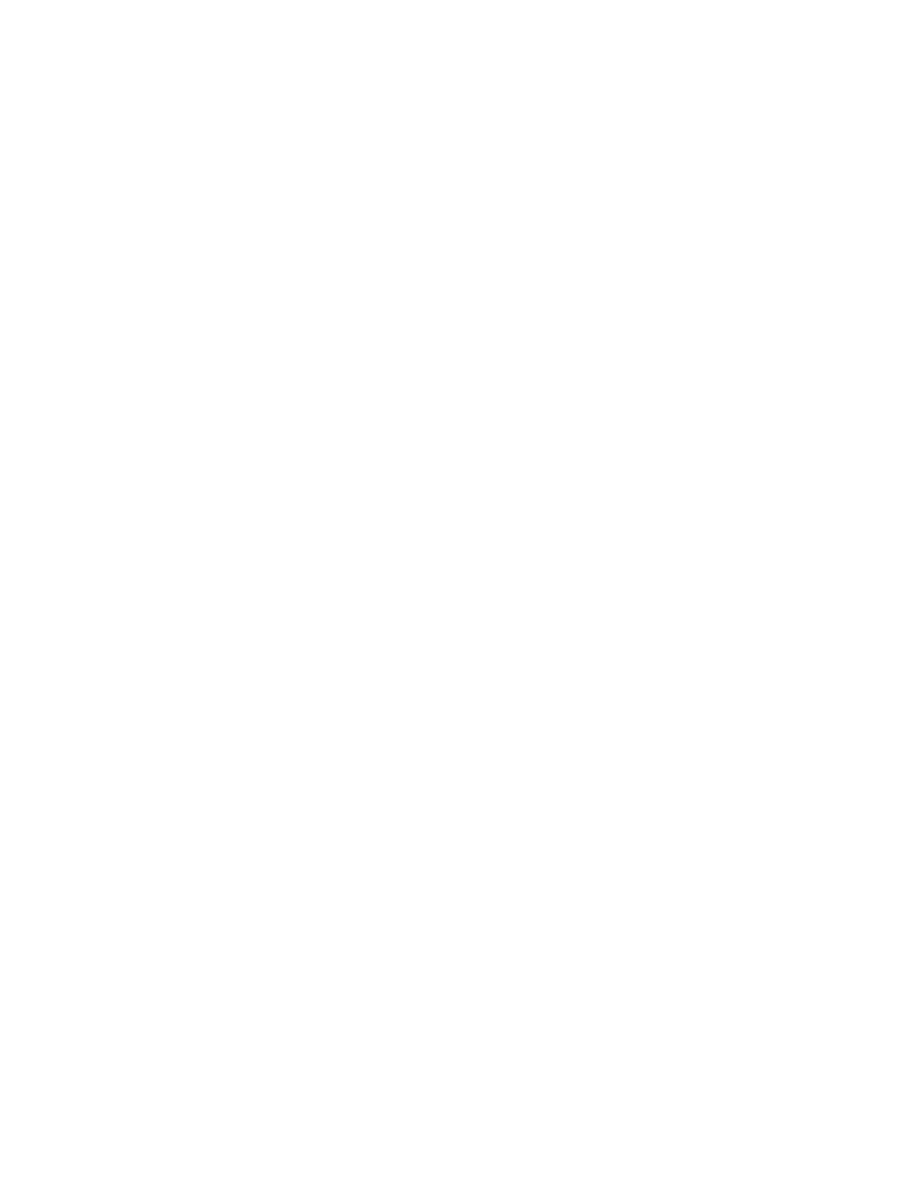
847
Federal Aviation Administration, DOT
§ 43.3
(1) The repair or alteration form
specified in §§ 43.5(b) and 43.9(d) is not
required to be completed for products
not produced under an FAA approval;
(2) Major repairs and major alter-
ations for products not produced under
an FAA approval are not required to be
recorded in accordance with appendix B
of this part; and
(3) The listing of major alterations
and major repairs specified in para-
graphs (a) and (b) of appendix A of this
part is not applicable to products not
produced under an FAA approval.
[Doc. No. 1993, 29 FR 5451, Apr. 23, 1964, as
amended by Amdt. 43–23, 47 FR 41084, Sept.
16, 1982; Amdt. 43–37, 66 FR 21066, Apr. 27,
2001; Amdt. 43–38, 67 FR 2109, Jan. 15, 2002;
Amdt. 43–39, 69 FR 44863, July 27, 2004; Amdt.
43–44, 75 FR 5219, Feb. 1, 2010; Docket FAA–
2015–0150, Amdt. 43–48, 81 FR 42208, June 28,
2016; Docket FAA–2018–1087, Amdt. 43–51, 86
FR 4381, Jan. 15, 2021]
§ 43.2
Records of overhaul and rebuild-
ing.
(a) No person may describe in any re-
quired maintenance entry or form an
aircraft, airframe, aircraft engine, pro-
peller, appliance, or component part as
being overhauled unless—
(1) Using methods, techniques, and
practices acceptable to the Adminis-
trator, it has been disassembled,
cleaned, inspected, repaired as nec-
essary, and reassembled; and
(2) It has been tested in accordance
with approved standards and technical
data, or in accordance with current
standards and technical data accept-
able to the Administrator, which have
been developed and documented by the
holder of the type certificate, supple-
mental type certificate, or a material,
part, process, or appliance approval
under part 21 of this chapter.
(b) No person may describe in any re-
quired maintenance entry or form an
aircraft, airframe, aircraft engine, pro-
peller, appliance, or component part as
being rebuilt unless it has been dis-
assembled, cleaned, inspected, repaired
as necessary, reassembled, and tested
to the same tolerances and limits as a
new item, using either new parts or
used parts that either conform to new
part tolerances and limits or to ap-
proved oversized or undersized dimen-
sions.
[Amdt. 43–23, 47 FR 41084, Sept. 16, 1982, as
amended by Amdt. 43–43, 74 FR 53394, Oct. 16,
2009]
§ 43.3
Persons authorized to perform
maintenance, preventive mainte-
nance, rebuilding, and alterations.
(a) Except as provided in this section
and § 43.17, no person may maintain, re-
build, alter, or perform preventive
maintenance on an aircraft, airframe,
aircraft engine, propeller, appliance, or
component part to which this part ap-
plies. Those items, the performance of
which is a major alteration, a major re-
pair, or preventive maintenance, are
listed in appendix A.
(b) The holder of a mechanic certifi-
cate may perform maintenance, pre-
ventive maintenance, and alterations
as provided in Part 65 of this chapter.
(c) The holder of a repairman certifi-
cate may perform maintenance, pre-
ventive maintenance, and alterations
as provided in part 65 of this chapter.
(d) A person working under the su-
pervision of a holder of a mechanic or
repairman certificate may perform the
maintenance, preventive maintenance,
and alterations that his supervisor is
authorized to perform, if the supervisor
personally observes the work being
done to the extent necessary to ensure
that it is being done properly and if the
supervisor is readily available, in per-
son, for consultation. However, this
paragraph does not authorize the per-
formance of any inspection required by
Part 91 or Part 125 of this chapter or
any inspection performed after a major
repair or alteration.
(e) The holder of a repair station cer-
tificate may perform maintenance, pre-
ventive maintenance, and alterations
as provided in Part 145 of this chapter.
(f) The holder of an air carrier oper-
ating certificate or an operating cer-
tificate issued under Part 121 or 135,
may perform maintenance, preventive
maintenance, and alterations as pro-
vided in Part 121 or 135.
(g) Except for holders of a sport pilot
certificate, the holder of a pilot certifi-
cate issued under part 61 may perform
preventive maintenance on any air-
craft owned or operated by that pilot
which is not used under part 121, 129, or
VerDate Sep<11>2014
09:06 Jun 28, 2024
Jkt 262046
PO 00000
Frm 00857
Fmt 8010
Sfmt 8010
Y:\SGML\262046.XXX
262046
jspears on DSK121TN23PROD with CFR
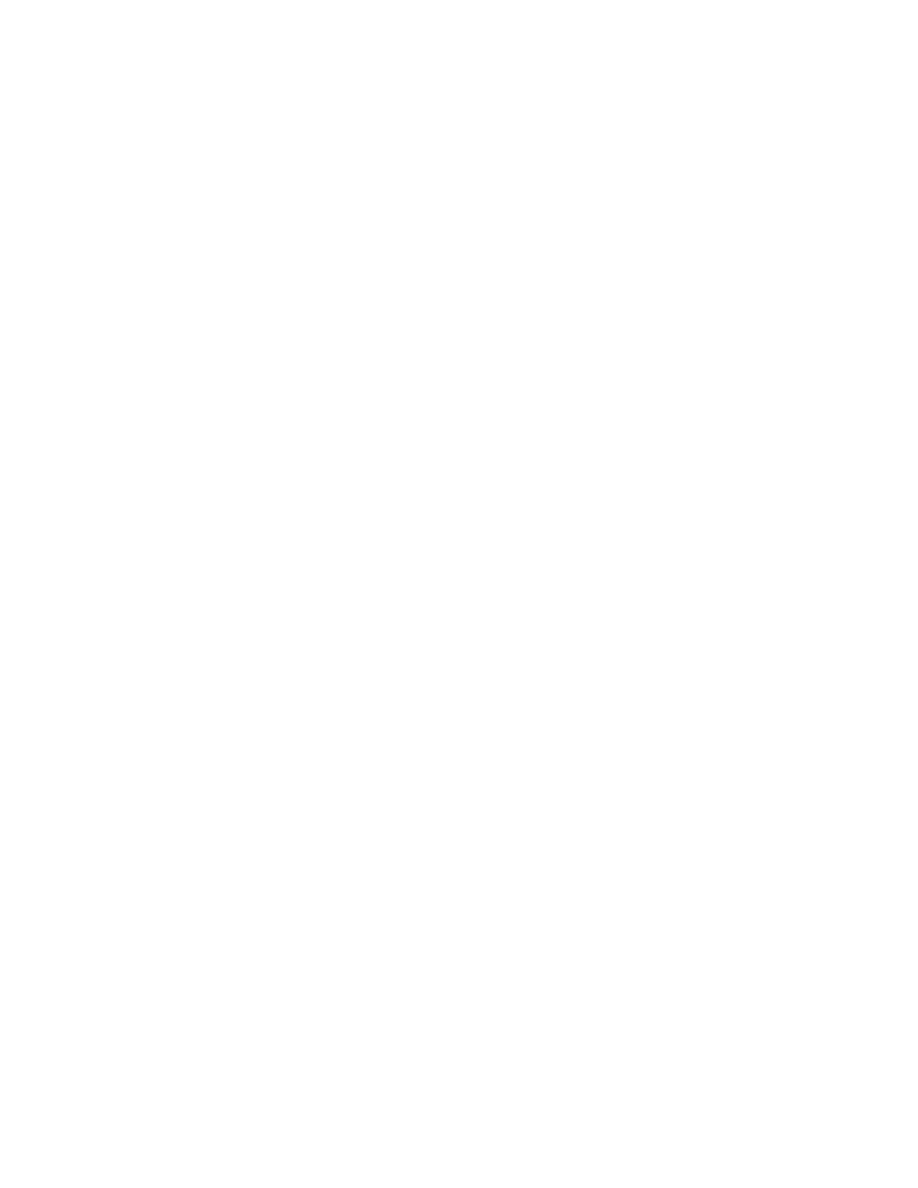
848
14 CFR Ch. I (1–1–24 Edition)
§ 43.5
135 of this chapter. The holder of a
sport pilot certificate may perform
preventive maintenance on an aircraft
owned or operated by that pilot and
issued a special airworthiness certifi-
cate in the light-sport category.
(h) Notwithstanding the provisions of
paragraph (g) of this section, the Ad-
ministrator may approve a certificate
holder under Part 135 of this chapter,
operating rotorcraft in a remote area,
to allow a pilot to perform specific pre-
ventive maintenance items provided—
(1) The items of preventive mainte-
nance are a result of a known or sus-
pected mechanical difficulty or mal-
function that occurred en route to or
in a remote area;
(2) The pilot has satisfactorily com-
pleted an approved training program
and is authorized in writing by the cer-
tificate holder for each item of preven-
tive maintenance that the pilot is au-
thorized to perform;
(3) There is no certificated mechanic
available to perform preventive main-
tenance;
(4) The certificate holder has proce-
dures to evaluate the accomplishment
of a preventive maintenance item that
requires a decision concerning the air-
worthiness of the rotorcraft; and
(5) The items of preventive mainte-
nance authorized by this section are
those listed in paragraph (c) of appen-
dix A of this part.
(i) Notwithstanding the provisions of
paragraph (g) of this section, in accord-
ance with an approval issued to the
holder of a certificate issued under part
135 of this chapter, a pilot of an air-
craft type-certificated for 9 or fewer
passenger seats, excluding any pilot
seat, may perform the removal and re-
installation of approved aircraft cabin
seats, approved cabin-mounted stretch-
ers, and when no tools are required, ap-
proved cabin-mounted medical oxygen
bottles, provided—
(1) The pilot has satisfactorily com-
pleted an approved training program
and is authorized in writing by the cer-
tificate holder to perform each task;
and
(2) The certificate holder has written
procedures available to the pilot to
evaluate the accomplishment of the
task.
(j) A manufacturer may—
(1) Rebuild or alter any aircraft, air-
craft engine, propeller, or appliance
manufactured by him under a type or
production certificate;
(2) Rebuild or alter any appliance or
part of aircraft, aircraft engines, pro-
pellers, or appliances manufactured by
him under a Technical Standard Order
Authorization, an FAA-Parts Manufac-
turer Approval, or Product and Process
Specification issued by the Adminis-
trator; and
(3) Perform any inspection required
by part 91 or part 125 of this chapter on
aircraft it manufactured under a type
certificate, or currently manufactures
under a production certificate.
(k) Updates of databases in installed
avionics meeting the conditions of this
paragraph are not considered mainte-
nance and may be performed by pilots
provided:
(1) The database upload is:
(i) Initiated from the flight deck;
(ii) Performed without disassembling
the avionics unit; and
(iii) Performed without the use of
tools and/or special equipment.
(2) The pilot must comply with the
certificate holder’s procedures or the
manufacturer’s instructions.
(3) The holder of operating certifi-
cates must make available written pro-
cedures consistent with manufacturer’s
instructions to the pilot that describe
how to:
(i) Perform the database update; and
(ii) Determine the status of the data
upload.
[Doc. No. 1993, 29 FR 5451, Apr. 23, 1964, as
amended by Amdt. 43–4, 31 FR 5249, Apr. 1,
1966; Amdt. 43–23, 47 FR 41084, Sept. 16, 1982;
Amdt. 43–25, 51 FR 40702, Nov. 7, 1986; Amdt.
43–36, 61 FR 19501, May 1, 1996; Amdt. 43–37, 66
FR 21066, Apr. 27, 2001; Amdt. 43–39, 69 FR
44863, July 27, 2004; Amdt. 43–43, 74 FR 53394,
Oct. 16, 2009; Amdt. 43–45, 77 FR 71096, Nov.
29, 2012]
§ 43.5
Approval for return to service
after maintenance, preventive
maintenance, rebuilding, or alter-
ation.
No person may approve for return to
service any aircraft, airframe, aircraft
engine, propeller, or appliance, that
has undergone maintenance, preventive
maintenance, rebuilding, or alteration
unless—
VerDate Sep<11>2014
09:06 Jun 28, 2024
Jkt 262046
PO 00000
Frm 00858
Fmt 8010
Sfmt 8010
Y:\SGML\262046.XXX
262046
jspears on DSK121TN23PROD with CFR
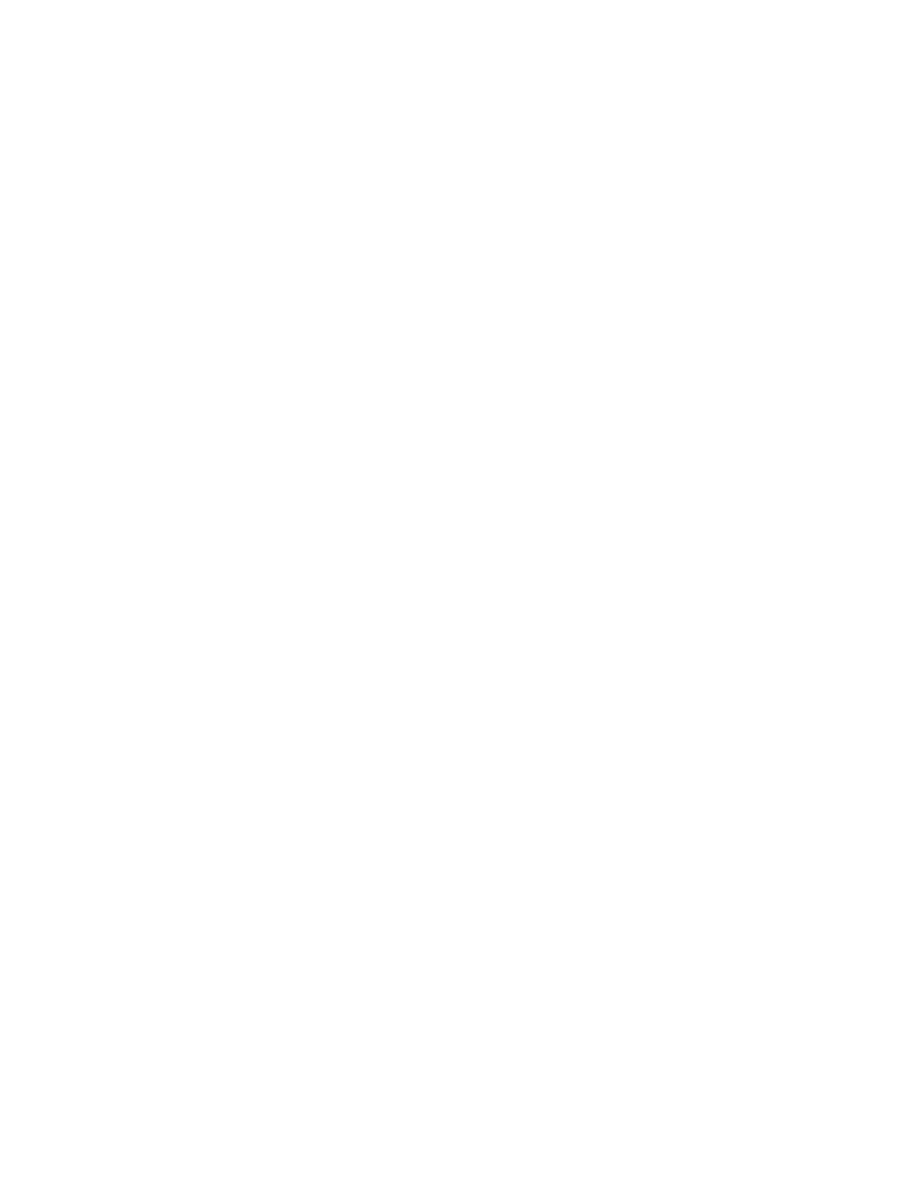
849
Federal Aviation Administration, DOT
§ 43.9
(a) The maintenance record entry re-
quired by § 43.9 or § 43.11, as appro-
priate, has been made;
(b) The repair or alteration form au-
thorized by or furnished by the Admin-
istrator has been executed in a manner
prescribed by the Administrator; and
(c) If a repair or an alteration results
in any change in the aircraft operating
limitations or flight data contained in
the approved aircraft flight manual,
those operating limitations or flight
data are appropriately revised and set
forth as prescribed in § 91.9 of this chap-
ter.
[Doc. No. 1993, 29 FR 5451, Apr. 23, 1964, as
amended by Amdt. 43–23, 47 FR 41084, Sept.
16, 1982; Amdt. 43–31, 54 FR 34330, Aug. 18,
1989]
§ 43.7
Persons authorized to approve
aircraft, airframes, aircraft engines,
propellers, appliances, or compo-
nent parts for return to service
after maintenance, preventive
maintenance, rebuilding, or alter-
ation.
(a) Except as provided in this section
and § 43.17, no person, other than the
Administrator, may approve an air-
craft, airframe, aircraft engine, pro-
peller, appliance, or component part
for return to service after it has under-
gone maintenance, preventive mainte-
nance, rebuilding, or alteration.
(b) The holder of a mechanic certifi-
cate or an inspection authorization
may approve an aircraft, airframe, air-
craft engine, propeller, appliance, or
component part for return to service as
provided in Part 65 of this chapter.
(c) The holder of a repair station cer-
tificate may approve an aircraft, air-
frame, aircraft engine, propeller, appli-
ance, or component part for return to
service as provided in Part 145 of this
chapter.
(d) A manufacturer may approve for
return to service any aircraft, air-
frame, aircraft engine, propeller, appli-
ance, or component part which that
manufacturer has worked on under
§ 43.3(j). However, except for minor al-
terations, the work must have been
done in accordance with technical data
approved by the Administrator.
(e) The holder of an air carrier oper-
ating certificate or an operating cer-
tificate issued under Part 121 or 135,
may approve an aircraft, airframe, air-
craft engine, propeller, appliance, or
component part for return to service as
provided in Part 121 or 135 of this chap-
ter, as applicable.
(f) A person holding at least a private
pilot certificate may approve an air-
craft for return to service after per-
forming preventive maintenance under
the provisions of § 43.3(g).
(g) The holder of a repairman certifi-
cate (light-sport aircraft) with a main-
tenance rating may approve an aircraft
issued a special airworthiness certifi-
cate in light-sport category for return
to service, as provided in part 65 of this
chapter.
(h) The holder of at least a sport
pilot certificate may approve an air-
craft owned or operated by that pilot
and issued a special airworthiness cer-
tificate in the light-sport category for
return to service after performing pre-
ventive maintenance under the provi-
sions of § 43.3(g).
[Amdt. 43–23, 47 FR 41084, Sept. 16, 1982, as
amended by Amdt. 43–36, 61 FR 19501, May 1,
1996; Amdt. 43–37, 66 FR 21066, Apr. 27, 2001;
Amdt. 43–39, 69 FR 44863, July 27, 2004]
§ 43.9
Content, form, and disposition of
maintenance, preventive mainte-
nance, rebuilding, and alteration
records (except inspections per-
formed in accordance with part 91,
part 125, § 135.411(a)(1), and
§ 135.419 of this chapter).
(a)
Maintenance record entries. Except
as provided in paragraphs (b) and (c) of
this section, each person who main-
tains, performs preventive mainte-
nance, rebuilds, or alters an aircraft,
airframe, aircraft engine, propeller, ap-
pliance, or component part shall make
an entry in the maintenance record of
that equipment containing the fol-
lowing information:
(1) A description (or reference to data
acceptable to the Administrator) of
work performed.
(2) The date of completion of the
work performed.
(3) The name of the person per-
forming the work if other than the per-
son specified in paragraph (a)(4) of this
section.
(4) If the work performed on the air-
craft, airframe, aircraft engine, pro-
peller, appliance, or component part
has been performed satisfactorily, the
signature, certificate number, and kind
VerDate Sep<11>2014
09:06 Jun 28, 2024
Jkt 262046
PO 00000
Frm 00859
Fmt 8010
Sfmt 8010
Y:\SGML\262046.XXX
262046
jspears on DSK121TN23PROD with CFR
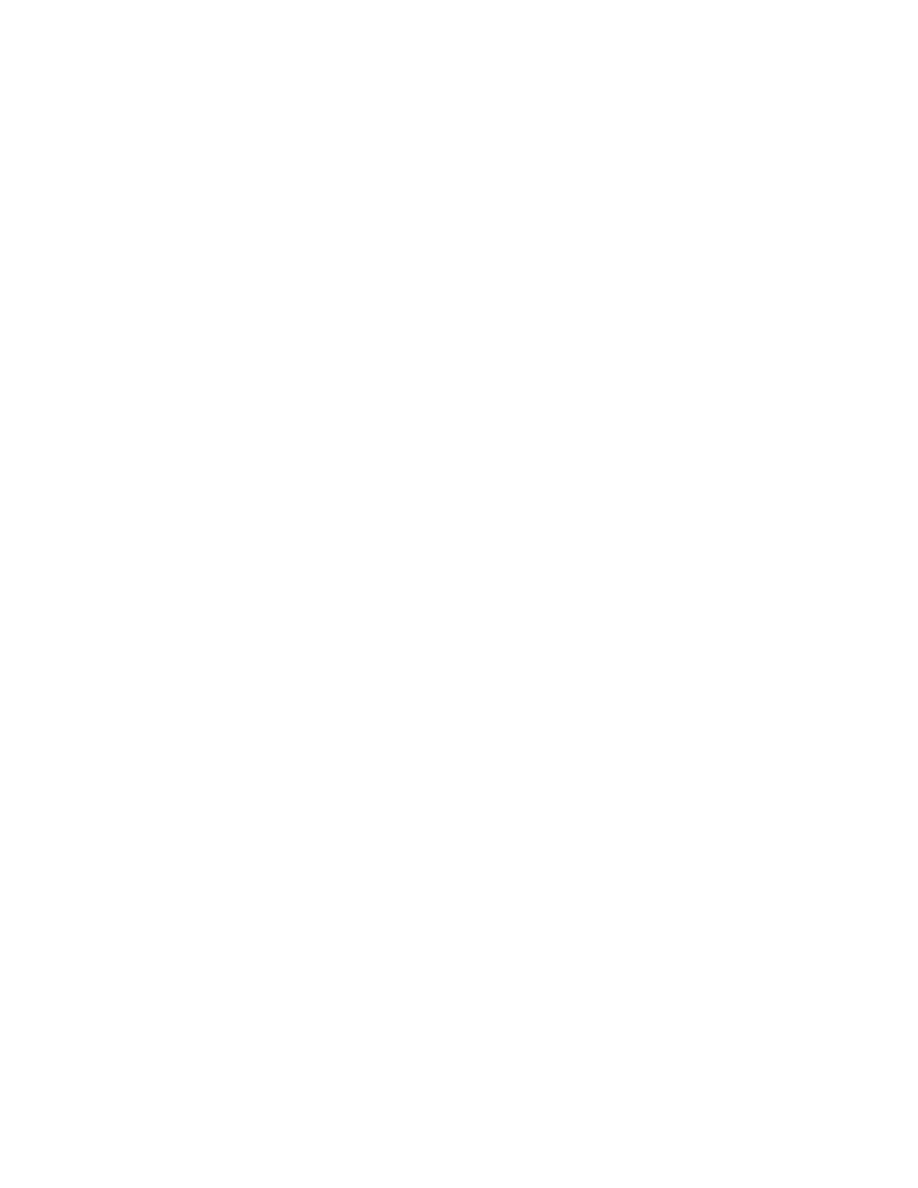
850
14 CFR Ch. I (1–1–24 Edition)
§ 43.10
of certificate held by the person ap-
proving the work. The signature con-
stitutes the approval for return to
service only for the work performed.
(b) Each holder of an air carrier oper-
ating certificate or an operating cer-
tificate issued under Part 121 or 135,
that is required by its approved oper-
ations specifications to provide for a
continuous airworthiness maintenance
program, shall make a record of the
maintenance, preventive maintenance,
rebuilding, and alteration, on aircraft,
airframes, aircraft engines, propellers,
appliances, or component parts which
it operates in accordance with the ap-
plicable provisions of Part 121 or 135 of
this chapter, as appropriate.
(c) This section does not apply to per-
sons performing inspections in accord-
ance with Part 91, 125, § 135.411(a)(1), or
§ 135.419 of this chapter.
(d) In addition to the entry required
by paragraph (a) of this section, major
repairs and major alterations shall be
entered on a form, and the form dis-
posed of, in the manner prescribed in
appendix B, by the person performing
the work.
[Amdt. 43–23, 47 FR 41085, Sept. 16, 1982, as
amended by Amdt. 43–37, 66 FR 21066, Apr. 27,
2001; Amdt. 43–39, 69 FR 44863, July 27, 2004]
§ 43.10
Disposition of life-limited air-
craft parts.
(a)
Definitions used in this section. For
the purposes of this section the fol-
lowing definitions apply.
Life-limited part means any part for
which a mandatory replacement limit
is specified in the type design, the In-
structions for Continued Airworthi-
ness, or the maintenance manual.
Life status means the accumulated
cycles, hours, or any other mandatory
replacement limit of a life-limited
part.
(b)
Temporary removal of parts from
type-certificated products. When a life-
limited part is temporarily removed
and reinstalled for the purpose of per-
forming maintenance, no disposition
under paragraph (c) of this section is
required if—
(1) The life status of the part has not
changed;
(2) The removal and reinstallation is
performed on the same serial numbered
product; and
(3) That product does not accumulate
time in service while the part is re-
moved.
(c)
Disposition of parts removed from
type-certificated products. Except as pro-
vided in paragraph (b) of this section,
after April 15, 2002 each person who re-
moves a life-limited part from a type-
certificated product must ensure that
the part is controlled using one of the
methods in this paragraph. The method
must deter the installation of the part
after it has reached its life limit. Ac-
ceptable methods include:
(1)
Record keeping system. The part
may be controlled using a record keep-
ing system that substantiates the part
number, serial number, and current life
status of the part. Each time the part
is removed from a type certificated
product, the record must be updated
with the current life status. This sys-
tem may include electronic, paper, or
other means of record keeping.
(2)
Tag or record attached to part. A
tag or other record may be attached to
the part. The tag or record must in-
clude the part number, serial number,
and current life status of the part.
Each time the part is removed from a
type certificated product, either a new
tag or record must be created, or the
existing tag or record must be updated
with the current life status.
(3)
Non-permanent marking. The part
may be legibly marked using a non-
permanent method showing its current
life status. The life status must be up-
dated each time the part is removed
from a type certificated product, or if
the mark is removed, another method
in this section may be used. The mark
must be accomplished in accordance
with the instructions under § 45.16 of
this chapter in order to maintain the
integrity of the part.
(4)
Permanent marking. The part may
be legibly marked using a permanent
method showing its current life status.
The life status must be updated each
time the part is removed from a type
certificated product. Unless the part is
permanently removed from use on type
certificated products, this permanent
mark must be accomplished in accord-
ance with the instructions under § 45.16
of this chapter in order to maintain the
integrity of the part.
VerDate Sep<11>2014
09:06 Jun 28, 2024
Jkt 262046
PO 00000
Frm 00860
Fmt 8010
Sfmt 8010
Y:\SGML\262046.XXX
262046
jspears on DSK121TN23PROD with CFR
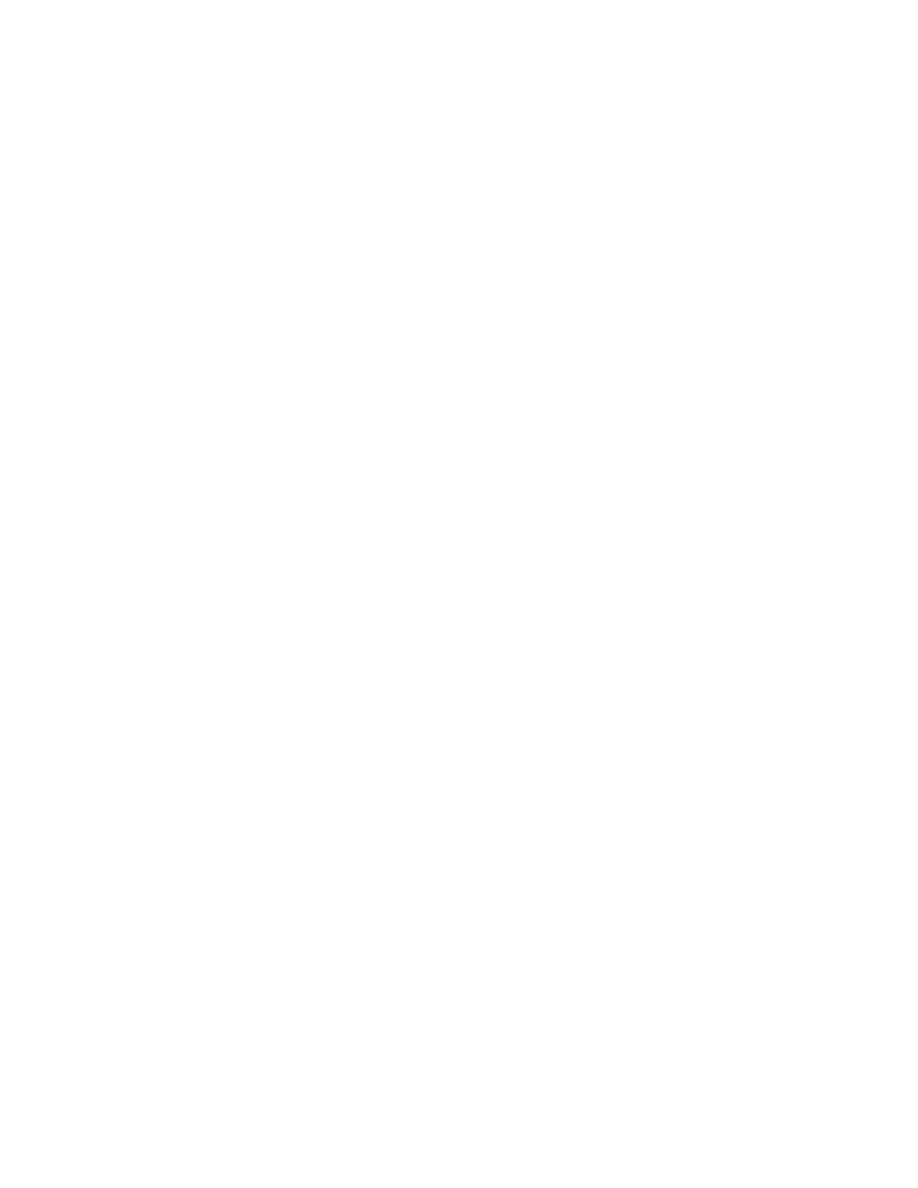
851
Federal Aviation Administration, DOT
§ 43.11
(5)
Segregation. The part may be seg-
regated using methods that deter its
installation on a type-certificated
product. These methods must include,
at least—
(i) Maintaining a record of the part
number, serial number, and current life
status, and
(ii) Ensuring the part is physically
stored separately from parts that are
currently eligible for installation.
(6)
Mutilation. The part may be muti-
lated to deter its installation in a type
certificated product. The mutilation
must render the part beyond repair and
incapable of being reworked to appear
to be airworthy.
(7)
Other methods. Any other method
approved or accepted by the FAA.
(d)
Transfer of life-limited parts. Each
person who removes a life-limited part
from a type certificated product and
later sells or otherwise transfers that
part must transfer with the part the
mark, tag, or other record used to com-
ply with this section, unless the part is
mutilated before it is sold or trans-
ferred.
[Doc. No. FAA–2000–8017, 67 FR 2110, Jan. 15,
2002, as amended by Amdt. 43–38A, 79 FR
67055, Nov. 12, 2014]
§ 43.11
Content, form, and disposition
of records for inspections con-
ducted under parts 91 and 125 and
§§ 135.411(a)(1) and 135.419 of this
chapter.
(a)
Maintenance record entries. The
person approving or disapproving for
return to service an aircraft, airframe,
aircraft engine, propeller, appliance, or
component part after any inspection
performed in accordance with part 91,
125, § 135.411(a)(1), or § 135.419 shall
make an entry in the maintenance
record of that equipment containing
the following information:
(1) The type of inspection and a brief
description of the extent of the inspec-
tion.
(2) The date of the inspection and air-
craft total time in service.
(3) The signature, the certificate
number, and kind of certificate held by
the person approving or disapproving
for return to service the aircraft, air-
frame, aircraft engine, propeller, appli-
ance, component part, or portions
thereof.
(4) Except for progressive inspec-
tions, if the aircraft is found to be air-
worthy and approved for return to
service, the following or a similarly
worded statement—‘‘I certify that this
aircraft has been inspected in accord-
ance with (insert type) inspection and
was determined to be in airworthy con-
dition.’’
(5) Except for progressive inspec-
tions, if the aircraft is not approved for
return to service because of needed
maintenance, noncompliance with ap-
plicable specifications, airworthiness
directives, or other approved data, the
following or a similarly worded state-
ment—‘‘I certify that this aircraft has
been inspected in accordance with (in-
sert type) inspection and a list of dis-
crepancies and unairworthy items
dated (date) has been provided for the
aircraft owner or operator.’’
(6) For progressive inspections, the
following or a similarly worded state-
ment—‘‘I certify that in accordance
with a progressive inspection program,
a routine inspection of (identify wheth-
er aircraft or components) and a de-
tailed inspection of (identify compo-
nents) were performed and the (aircraft
or components) are (approved or dis-
approved) for return to service.’’ If dis-
approved, the entry will further state
‘‘and a list of discrepancies and unair-
worthy items dated (date) has been
provided to the aircraft owner or oper-
ator.’’
(7) If an inspection is conducted
under an inspection program provided
for in part 91, 125, or § 135.411(a)(1), the
entry must identify the inspection pro-
gram, that part of the inspection pro-
gram accomplished, and contain a
statement that the inspection was per-
formed in accordance with the inspec-
tions and procedures for that par-
ticular program.
(b)
Listing of discrepancies and plac-
ards. If the person performing any in-
spection required by part 91 or 125 or
§ 135.411(a)(1) of this chapter finds that
the aircraft is unairworthy or does not
meet the applicable type certificate
data, airworthiness directives, or other
approved data upon which its air-
worthiness depends, that persons must
give the owner or lessee a signed and
dated list of those discrepancies. For
VerDate Sep<11>2014
09:06 Jun 28, 2024
Jkt 262046
PO 00000
Frm 00861
Fmt 8010
Sfmt 8010
Y:\SGML\262046.XXX
262046
jspears on DSK121TN23PROD with CFR
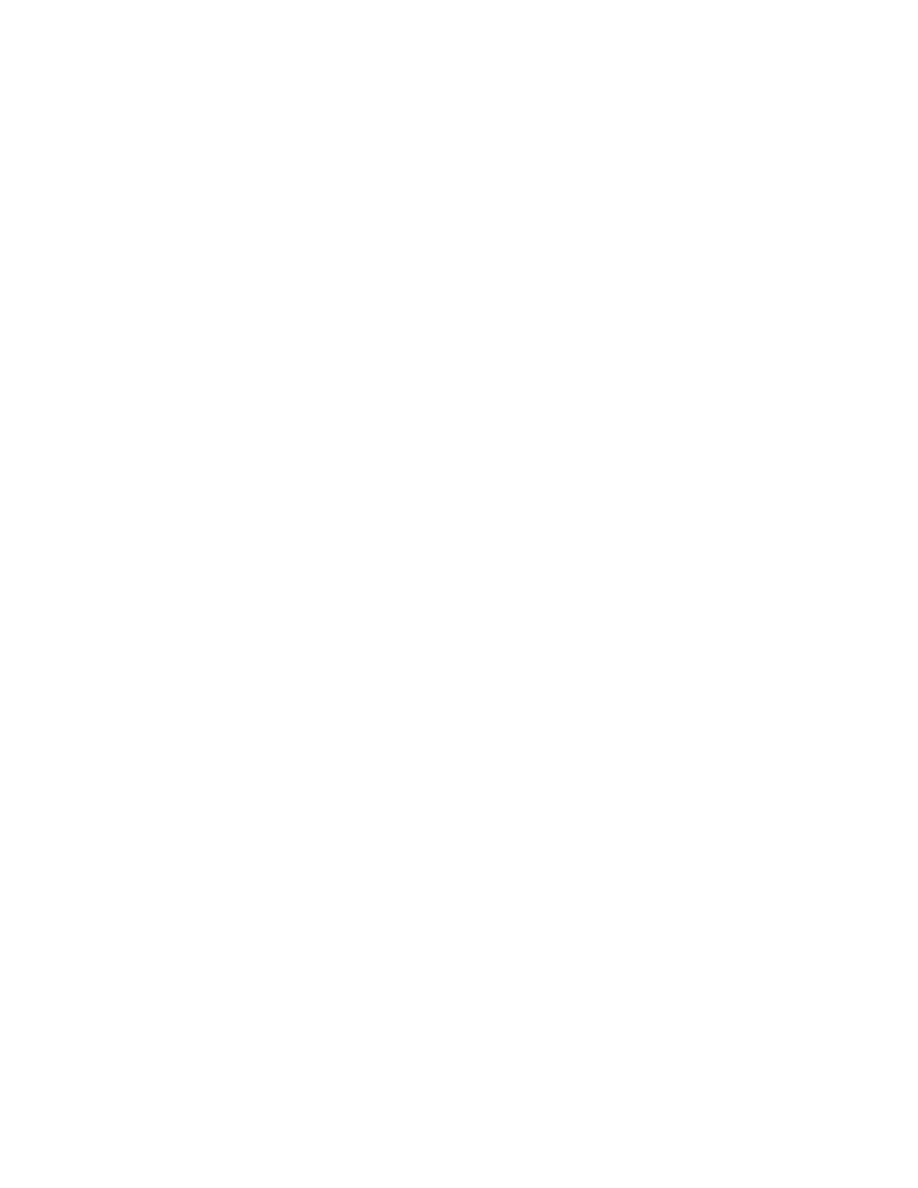
852
14 CFR Ch. I (1–1–24 Edition)
§ 43.12
those items permitted to be inoper-
ative under § 91.213(d)(2) of this chapter,
that person shall place a placard, that
meets the aircraft’s airworthiness cer-
tification regulations, on each inoper-
ative instrument and the cockpit con-
trol of each item of inoperative equip-
ment, marking it ‘‘Inoperative,’’ and
shall add the items to the signed and
dated list of discrepancies given to the
owner or lessee.
[Amdt. 43–23, 47 FR 41085, Sept. 16, 1982, as
amended by Amdt. 43–30, 53 FR 50195, Dec. 13,
1988; Amdt. 43–36, 61 FR 19501, May 1, 1996; 71
FR 44188, Aug. 4, 2006]
§ 43.12
Maintenance records: Falsifica-
tion, reproduction, or alteration.
(a) No person may make or cause to
be made:
(1) Any fraudulent or intentionally
false entry in any record or report that
is required to be made, kept, or used to
show compliance with any requirement
under this part;
(2) Any reproduction, for fraudulent
purpose, of any record or report under
this part; or
(3) Any alteration, for fraudulent
purpose, of any record or report under
this part.
(b) The commission by any person of
an act prohibited under paragraph (a)
of this section is a basis for suspending
or revoking the applicable airman, op-
erator, or production certificate, Tech-
nical Standard Order Authorization,
FAA-Parts Manufacturer Approval, or
Product and Process Specification
issued by the Administrator and held
by that person.
[Amdt. 43–19, 43 FR 22639, May 25, 1978, as
amended by Amdt. 43–23, 47 FR 41085, Sept.
16, 1982]
§ 43.13
Performance rules (general).
(a) Each person performing mainte-
nance, alteration, or preventive main-
tenance on an aircraft, engine, pro-
peller, or appliance shall use the meth-
ods, techniques, and practices pre-
scribed in the current manufacturer’s
maintenance manual or Instructions
for Continued Airworthiness prepared
by its manufacturer, or other methods,
techniques, and practices acceptable to
the Administrator, except as noted in
§ 43.16. He shall use the tools, equip-
ment, and test apparatus necessary to
assure completion of the work in ac-
cordance with accepted industry prac-
tices. If special equipment or test appa-
ratus is recommended by the manufac-
turer involved, he must use that equip-
ment or apparatus or its equivalent ac-
ceptable to the Administrator.
(b) Each person maintaining or alter-
ing, or performing preventive mainte-
nance, shall do that work in such a
manner and use materials of such a
quality, that the condition of the air-
craft, airframe, aircraft engine, pro-
peller, or appliance worked on will be
at least equal to its original or prop-
erly altered condition (with regard to
aerodynamic function, structural
strength, resistance to vibration and
deterioration, and other qualities af-
fecting airworthiness).
(c)
Special provisions for holders of air
carrier operating certificates and oper-
ating certificates issued under the provi-
sions of Part 121 or 135 and Part 129 oper-
ators holding operations specifications.
Unless otherwise notified by the ad-
ministrator, the methods, techniques,
and practices contained in the mainte-
nance manual or the maintenance part
of the manual of the holder of an air
carrier operating certificate or an op-
erating certificate under Part 121 or 135
and Part 129 operators holding oper-
ations specifications (that is required
by its operating specifications to pro-
vide a continuous airworthiness main-
tenance and inspection program) con-
stitute acceptable means of compliance
with this section.
[Doc. No. 1993, 29 FR 5451, Apr. 23, 1964, as
amended by Amdt. 43–20, 45 FR 60182, Sept.
11, 1980; Amdt. 43–23, 47 FR 41085, Sept. 16,
1982; Amdt. 43–28, 52 FR 20028, June 16, 1987;
Amdt. 43–37, 66 FR 21066, Apr. 27, 2001]
§ 43.15
Additional performance rules
for inspections.
(a)
General. Each person performing
an inspection required by part 91, 125,
or 135 of this chapter, shall—
(1) Perform the inspection so as to
determine whether the aircraft, or por-
tion(s) thereof under inspection, meets
all applicable airworthiness require-
ments; and
(2) If the inspection is one provided
for in part 125, 135, or § 91.409(e) of this
VerDate Sep<11>2014
09:06 Jun 28, 2024
Jkt 262046
PO 00000
Frm 00862
Fmt 8010
Sfmt 8010
Y:\SGML\262046.XXX
262046
jspears on DSK121TN23PROD with CFR
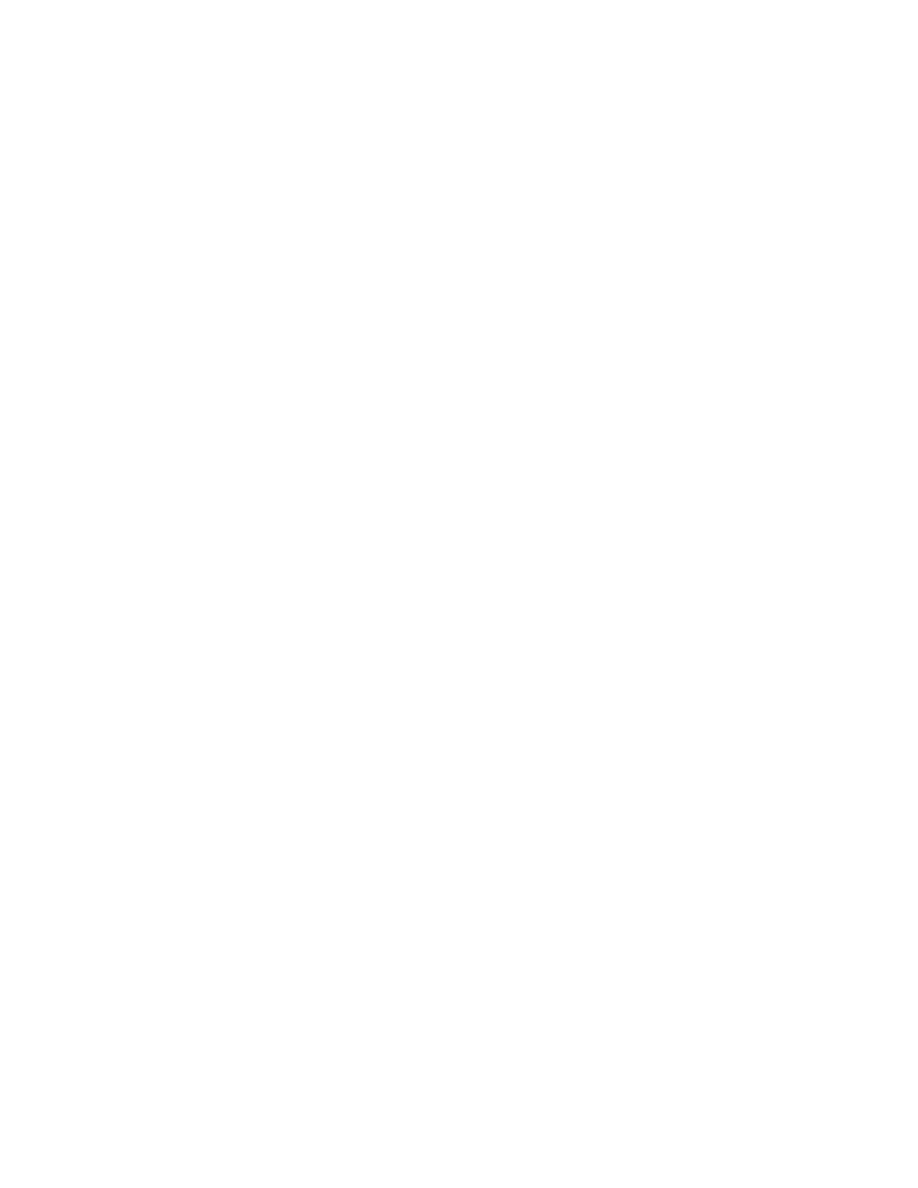
853
Federal Aviation Administration, DOT
§ 43.17
chapter, perform the inspection in ac-
cordance with the instructions and pro-
cedures set forth in the inspection pro-
gram for the aircraft being inspected.
(b)
Rotorcraft.
Each person per-
forming an inspection required by Part
91 on a rotorcraft shall inspect the fol-
lowing systems in accordance with the
maintenance manual or Instructions
for Continued Airworthiness of the
manufacturer concerned:
(1) The drive shafts or similar sys-
tems.
(2) The main rotor transmission gear
box for obvious defects.
(3) The main rotor and center section
(or the equivalent area).
(4) The auxiliary rotor on heli-
copters.
(c)
Annual and 100-hour inspections. (1)
Each person performing an annual or
100-hour inspection shall use a check-
list while performing the inspection.
The checklist may be of the person’s
own design, one provided by the manu-
facturer of the equipment being in-
spected or one obtained from another
source. This checklist must include the
scope and detail of the items contained
in appendix D to this part and para-
graph (b) of this section.
(2) Each person approving a recipro-
cating-engine-powered aircraft for re-
turn to service after an annual or 100-
hour inspection shall, before that ap-
proval, run the aircraft engine or en-
gines to determine satisfactory per-
formance in accordance with the manu-
facturer’s recommendations of—
(i) Power output (static and idle
r.p.m.);
(ii) Magnetos;
(iii) Fuel and oil pressure; and
(iv) Cylinder and oil temperature.
(3) Each person approving a turbine-
engine-powered aircraft for return to
service after an annual, 100-hour, or
progressive inspection shall, before
that approval, run the aircraft engine
or engines to determine satisfactory
performance in accordance with the
manufacturer’s recommendations.
(d)
Progressive inspection. (1) Each per-
son performing a progressive inspec-
tion shall, at the start of a progressive
inspection system, inspect the aircraft
completely. After this initial inspec-
tion, routine and detailed inspections
must be conducted as prescribed in the
progressive inspection schedule. Rou-
tine inspections consist of visual exam-
ination or check of the appliances, the
aircraft, and its components and sys-
tems, insofar as practicable without
disassembly. Detailed inspections con-
sist of a thorough examination of the
appliances, the aircraft, and its compo-
nents and systems, with such dis-
assembly as is necessary. For the pur-
poses of this subparagraph, the over-
haul of a component or system is con-
sidered to be a detailed inspection.
(2) If the aircraft is away from the
station where inspections are normally
conducted, an appropriately rated me-
chanic, a certificated repair station, or
the manufacturer of the aircraft may
perform inspections in accordance with
the procedures and using the forms of
the person who would otherwise per-
form the inspection.
[Doc. No. 1993, 29 FR 5451, Apr. 23, 1964, as
amended by Amdt. 43–23, 47 FR 41086, Sept.
16, 1982; Amdt. 43–25, 51 FR 40702, Nov. 7, 1986;
Amdt. 43–31, 54 FR 34330, Aug. 18, 1989; 71 FR
44188, Aug. 4, 2006]
§ 43.16
Airworthiness limitations.
Each person performing an inspec-
tion or other maintenance specified in
an Airworthiness Limitations section
of a manufacturer’s maintenance man-
ual or Instructions for Continued Air-
worthiness shall perform the inspec-
tion or other maintenance in accord-
ance with that section, or in accord-
ance with operations specifications ap-
proved by the Administrator under
part 121 or 135, or an inspection pro-
gram approved under § 91.409(e).
[71 FR 44188, Aug. 4, 2006]
§ 43.17
Maintenance, preventive main-
tenance, and alterations performed
on U.S. aeronautical products by
certain Canadian persons.
(a)
Definitions. For purposes of this
section:
Aeronautical product means any civil
aircraft or airframe, aircraft engine,
propeller, appliance, component, or
part to be installed thereon.
Canadian aeronautical product means
any aeronautical product under air-
worthiness regulation by Transport
Canada Civil Aviation.
VerDate Sep<11>2014
09:06 Jun 28, 2024
Jkt 262046
PO 00000
Frm 00863
Fmt 8010
Sfmt 8010
Y:\SGML\262046.XXX
262046
jspears on DSK121TN23PROD with CFR
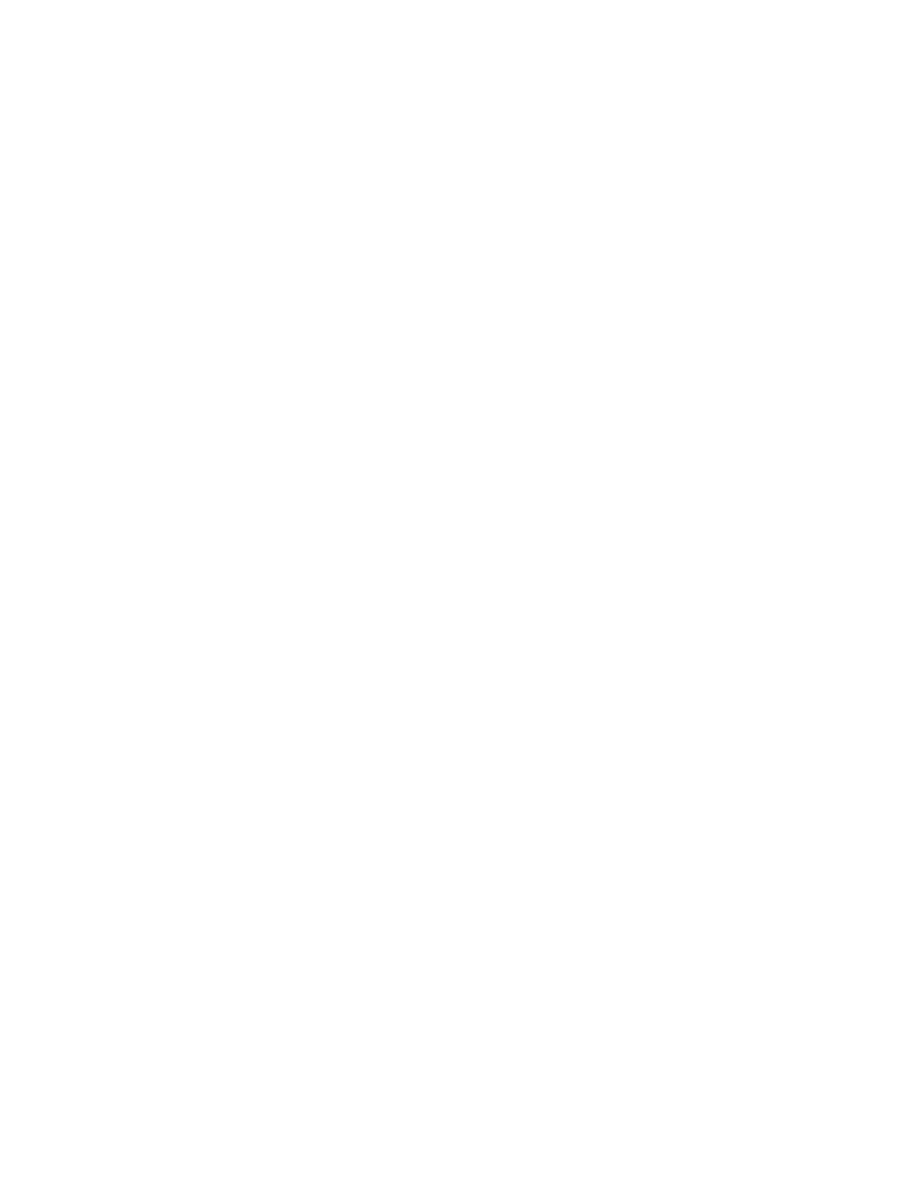
854
14 CFR Ch. I (1–1–24 Edition)
Pt. 43, App. A
U.S. aeronautical product means any
aeronautical product under airworthi-
ness regulation by the FAA.
(b)
Applicability. This section does not
apply to any U.S. aeronautical prod-
ucts maintained or altered under any
bilateral agreement made between
Canada and any country other than the
United States.
(c)
Authorized persons. (1) A person
holding a valid Transport Canada Civil
Aviation Maintenance Engineer license
and appropriate ratings may, with re-
spect to a U.S.-registered aircraft lo-
cated in Canada, perform maintenance,
preventive maintenance, and alter-
ations in accordance with the require-
ments of paragraph (d) of this section
and approve the affected aircraft for
return to service in accordance with
the requirements of paragraph (e) of
this section.
(2) A Transport Canada Civil Avia-
tion Approved Maintenance Organiza-
tion (AMO) holding appropriate ratings
may, with respect to a U.S.-registered
aircraft or other U.S. aeronautical
products located in Canada, perform
maintenance, preventive maintenance,
and alterations in accordance with the
requirements of paragraph (d) of this
section and approve the affected prod-
ucts for return to service in accordance
with the requirements of paragraph (e)
of this section.
(d)
Performance requirements. A person
authorized in paragraph (c) of this sec-
tion may perform maintenance (includ-
ing any inspection required by Sec.
91.409 of this chapter, except an annual
inspection), preventive maintenance,
and alterations, provided—
(1) The person performing the work is
authorized by Transport Canada Civil
Aviation to perform the same type of
work with respect to Canadian aero-
nautical products;
(2) The maintenance, preventive
maintenance, or alteration is per-
formed in accordance with a Bilateral
Aviation Safety Agreement between
the United States and Canada and asso-
ciated Maintenance Implementation
Procedures that provide a level of safe-
ty equivalent to that provided by the
provisions of this chapter;
(3) The maintenance, preventive
maintenance, or alteration is per-
formed such that the affected product
complies with the applicable require-
ments of part 36 of this chapter; and
(4) The maintenance, preventive
maintenance, or alteration is recorded
in accordance with a Bilateral Aviation
Safety Agreement between the United
States and Canada and associated
Maintenance Implementation Proce-
dures that provide a level of safety
equivalent to that provided by the pro-
visions of this chapter.
(e)
Approval requirements. (1) To re-
turn an affected product to service, a
person authorized in paragraph (c) of
this section must approve (certify)
maintenance, preventive maintenance,
and alterations performed under this
section, except that an Aircraft Main-
tenance Engineer may not approve a
major repair or major alteration.
(2) An AMO whose system of quality
control for the maintenance, preven-
tive maintenance, alteration, and in-
spection of aeronautical products has
been approved by Transport Canada
Civil Aviation, or an authorized em-
ployee performing work for such an
AMO, may approve (certify) a major re-
pair or major alteration performed
under this section if the work was per-
formed in accordance with technical
data approved by the FAA.
(f) No person may operate in air com-
merce an aircraft, airframe, aircraft
engine, propeller, or appliance on
which maintenance, preventive main-
tenance, or alteration has been per-
formed under this section unless it has
been approved for return to service by
a person authorized in this section.
[Amdt. 43–33, 56 FR 57571, Nov. 12, 1991, as
amended by Amdt. 43–40, 71 FR 40877, July 14,
2005]
A
PPENDIX
A
TO
P
ART
43—M
AJOR
A
LTER
-
ATIONS
, M
AJOR
R
EPAIRS
,
AND
P
RE
-
VENTIVE
M
AINTENANCE
(a)
Major alterations—(1) Airframe major al-
terations. Alterations of the following parts
and alterations of the following types, when
not listed in the aircraft specifications
issued by the FAA, are airframe major alter-
ations:
(i) Wings.
(ii) Tail surfaces.
(iii) Fuselage.
(iv) Engine mounts.
(v) Control system.
(vi) Landing gear.
(vii) Hull or floats.
VerDate Sep<11>2014
09:06 Jun 28, 2024
Jkt 262046
PO 00000
Frm 00864
Fmt 8010
Sfmt 8002
Y:\SGML\262046.XXX
262046
jspears on DSK121TN23PROD with CFR
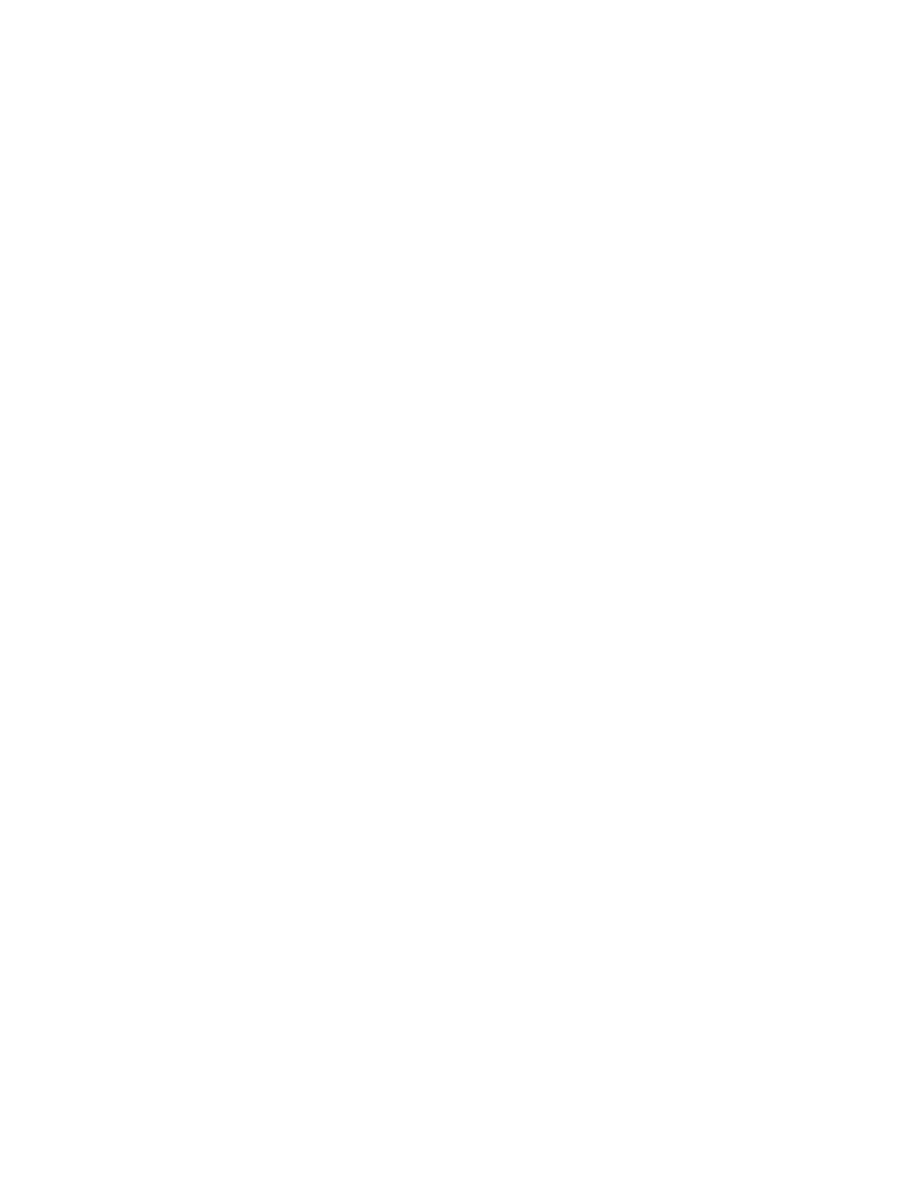
855
Federal Aviation Administration, DOT
Pt. 43, App. A
(viii) Elements of an airframe including
spars, ribs, fittings, shock absorbers, brac-
ing, cowling, fairings, and balance weights.
(ix) Hydraulic and electrical actuating sys-
tem of components.
(x) Rotor blades.
(xi) Changes to the empty weight or empty
balance which result in an increase in the
maximum certificated weight or center of
gravity limits of the aircraft.
(xii) Changes to the basic design of the
fuel, oil, cooling, heating, cabin pressuriza-
tion, electrical, hydraulic, de-icing, or ex-
haust systems.
(xiii) Changes to the wing or to fixed or
movable control surfaces which affect flutter
and vibration characteristics.
(2)
Powerplant major alterations. The fol-
lowing alterations of a powerplant when not
listed in the engine specifications issued by
the FAA, are powerplant major alterations.
(i) Conversion of an aircraft engine from
one approved model to another, involving
any changes in compression ratio, propeller
reduction gear, impeller gear ratios or the
substitution of major engine parts which re-
quires extensive rework and testing of the
engine.
(ii) Changes to the engine by replacing air-
craft engine structural parts with parts not
supplied by the original manufacturer or
parts not specifically approved by the Ad-
ministrator.
(iii) Installation of an accessory which is
not approved for the engine.
(iv) Removal of accessories that are listed
as required equipment on the aircraft or en-
gine specification.
(v) Installation of structural parts other
than the type of parts approved for the in-
stallation.
(vi) Conversions of any sort for the purpose
of using fuel of a rating or grade other than
that listed in the engine specifications.
(3)
Propeller major alterations. The following
alterations of a propeller when not author-
ized in the propeller specifications issued by
the FAA are propeller major alterations:
(i) Changes in blade design.
(ii) Changes in hub design.
(iii) Changes in the governor or control de-
sign.
(iv) Installation of a propeller governor or
feathering system.
(v) Installation of propeller de-icing sys-
tem.
(vi) Installation of parts not approved for
the propeller.
(4)
Appliance major alterations. Alterations
of the basic design not made in accordance
with recommendations of the appliance man-
ufacturer or in accordance with an FAA Air-
worthiness Directive are appliance major al-
terations. In addition, changes in the basic
design of radio communication and naviga-
tion equipment approved under type certifi-
cation or a Technical Standard Order that
have an effect on frequency stability, noise
level, sensitivity, selectivity, distortion,
spurious radiation, AVC characteristics, or
ability to meet environmental test condi-
tions and other changes that have an effect
on the performance of the equipment are
also major alterations.
(b)
Major repairs—(1) Airframe major repairs.
Repairs to the following parts of an airframe
and repairs of the following types, involving
the strengthening, reinforcing, splicing, and
manufacturing of primary structural mem-
bers or their replacement, when replacement
is by fabrication such as riveting or welding,
are airframe major repairs.
(i) Box beams.
(ii) Monocoque or semimonocoque wings or
control surfaces.
(iii) Wing stringers or chord members.
(iv) Spars.
(v) Spar flanges.
(vi) Members of truss-type beams.
(vii) Thin sheet webs of beams.
(viii) Keel and chine members of boat hulls
or floats.
(ix) Corrugated sheet compression mem-
bers which act as flange material of wings or
tail surfaces.
(x) Wing main ribs and compression mem-
bers.
(xi) Wing or tail surface brace struts.
(xii) Engine mounts.
(xiii) Fuselage longerons.
(xiv) Members of the side truss, horizontal
truss, or bulkheads.
(xv) Main seat support braces and brack-
ets.
(xvi) Landing gear brace struts.
(xvii) Axles.
(xviii) Wheels.
(xix) Skis, and ski pedestals.
(xx) Parts of the control system such as
control columns, pedals, shafts, brackets, or
horns.
(xxi) Repairs involving the substitution of
material.
(xxii) The repair of damaged areas in metal
or plywood stressed covering exceeding six
inches in any direction.
(xxiii) The repair of portions of skin sheets
by making additional seams.
(xxiv) The splicing of skin sheets.
(xxv) The repair of three or more adjacent
wing or control surface ribs or the leading
edge of wings and control surfaces, between
such adjacent ribs.
(xxvi) Repair of fabric covering involving
an area greater than that required to repair
two adjacent ribs.
(xxvii) Replacement of fabric on fabric cov-
ered parts such as wings, fuselages, stabi-
lizers, and control surfaces.
(xxviii) Repairing, including rebottoming,
of removable or integral fuel tanks and oil
tanks.
(2)
Powerplant major repairs. Repairs of the
following parts of an engine and repairs of
VerDate Sep<11>2014
09:06 Jun 28, 2024
Jkt 262046
PO 00000
Frm 00865
Fmt 8010
Sfmt 8002
Y:\SGML\262046.XXX
262046
jspears on DSK121TN23PROD with CFR
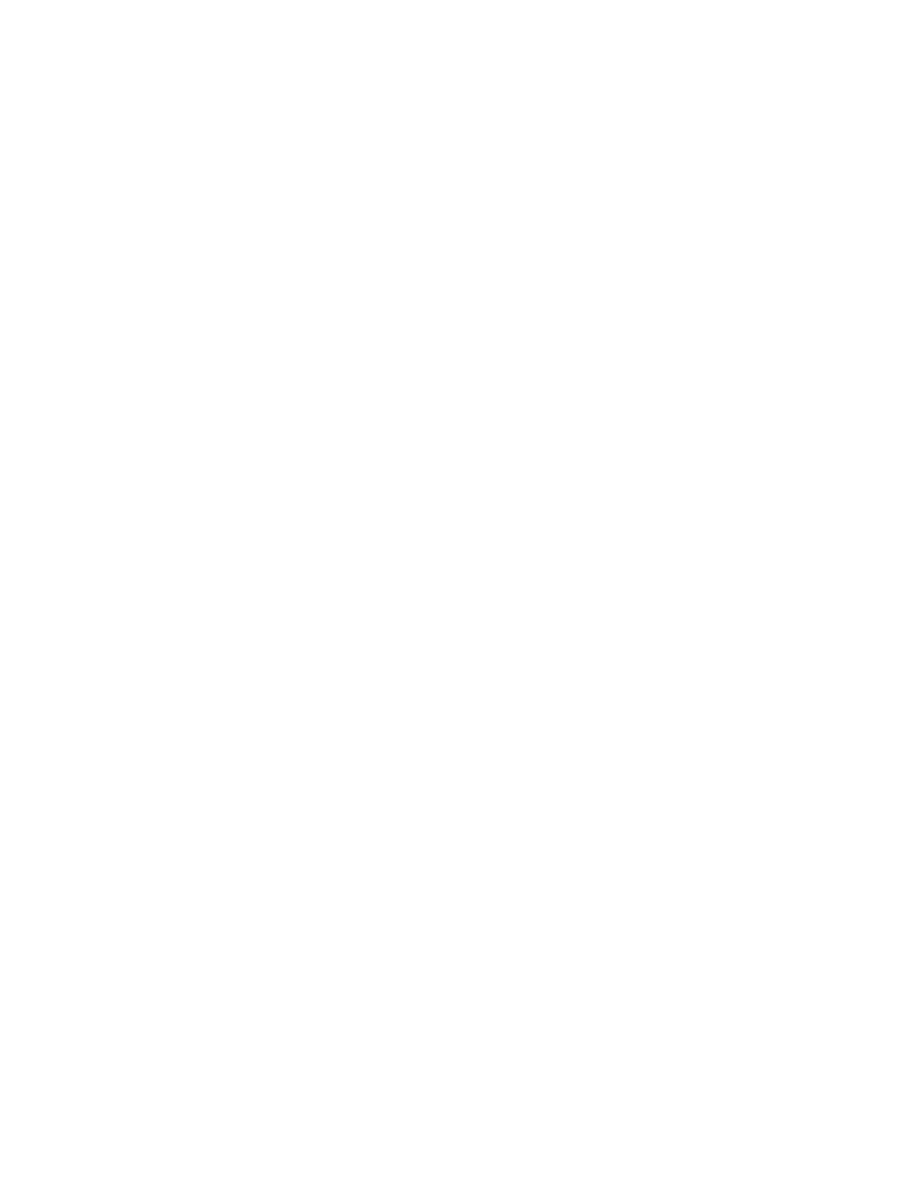
856
14 CFR Ch. I (1–1–24 Edition)
Pt. 43, App. A
the following types, are powerplant major re-
pairs:
(i) Separation or disassembly of a crank-
case or crankshaft of a reciprocating engine
equipped with an integral supercharger.
(ii) Separation or disassembly of a crank-
case or crankshaft of a reciprocating engine
equipped with other than spur-type propeller
reduction gearing.
(iii) Special repairs to structural engine
parts by welding, plating, metalizing, or
other methods.
(3)
Propeller major repairs. Repairs of the
following types to a propeller are propeller
major repairs:
(i) Any repairs to, or straightening of steel
blades.
(ii) Repairing or machining of steel hubs.
(iii) Shortening of blades.
(iv) Retipping of wood propellers.
(v) Replacement of outer laminations on
fixed pitch wood propellers.
(vi) Repairing elongated bolt holes in the
hub of fixed pitch wood propellers.
(vii) Inlay work on wood blades.
(viii) Repairs to composition blades.
(ix) Replacement of tip fabric.
(x) Replacement of plastic covering.
(xi) Repair of propeller governors.
(xii) Overhaul of controllable pitch propel-
lers.
(xiii) Repairs to deep dents, cuts, scars,
nicks, etc., and straightening of aluminum
blades.
(xiv) The repair or replacement of internal
elements of blades.
(4)
Appliance major repairs. Repairs of the
following types to appliances are appliance
major repairs:
(i) Calibration and repair of instruments.
(ii) Calibration of radio equipment.
(iii) Rewinding the field coil of an elec-
trical accessory.
(iv) Complete disassembly of complex hy-
draulic power valves.
(v) Overhaul of pressure type carburetors,
and pressure type fuel, oil and hydraulic
pumps.
(c)
Preventive maintenance. Preventive
maintenance is limited to the following
work, provided it does not involve complex
assembly operations:
(1) Removal, installation, and repair of
landing gear tires.
(2) Replacing elastic shock absorber cords
on landing gear.
(3) Servicing landing gear shock struts by
adding oil, air, or both.
(4) Servicing landing gear wheel bearings,
such as cleaning and greasing.
(5) Replacing defective safety wiring or
cotter keys.
(6) Lubrication not requiring disassembly
other than removal of nonstructural items
such as cover plates, cowlings, and fairings.
(7) Making simple fabric patches not re-
quiring rib stitching or the removal of struc-
tural parts or control surfaces. In the case of
balloons, the making of small fabric repairs
to envelopes (as defined in, and in accord-
ance with, the balloon manufacturers’ in-
structions) not requiring load tape repair or
replacement.
(8) Replenishing hydraulic fluid in the hy-
draulic reservoir.
(9) Refinishing decorative coating of fuse-
lage, balloon baskets, wings tail group sur-
faces (excluding balanced control surfaces),
fairings, cowlings, landing gear, cabin, or
cockpit interior when removal or dis-
assembly of any primary structure or oper-
ating system is not required.
(10) Applying preservative or protective
material to components where no dis-
assembly of any primary structure or oper-
ating system is involved and where such
coating is not prohibited or is not contrary
to good practices.
(11) Repairing upholstery and decorative
furnishings of the cabin, cockpit, or balloon
basket interior when the repairing does not
require disassembly of any primary struc-
ture or operating system or interfere with an
operating system or affect the primary
structure of the aircraft.
(12) Making small simple repairs to fair-
ings, nonstructural cover plates, cowlings,
and small patches and reinforcements not
changing the contour so as to interfere with
proper air flow.
(13) Replacing side windows where that
work does not interfere with the structure or
any operating system such as controls, elec-
trical equipment, etc.
(14) Replacing safety belts.
(15) Replacing seats or seat parts with re-
placement parts approved for the aircraft,
not involving disassembly of any primary
structure or operating system.
(16) Trouble shooting and repairing broken
circuits in landing light wiring circuits.
(17) Replacing bulbs, reflectors, and lenses
of position and landing lights.
(18) Replacing wheels and skis where no
weight and balance computation is involved.
(19) Replacing any cowling not requiring
removal of the propeller or disconnection of
flight controls.
(20) Replacing or cleaning spark plugs and
setting of spark plug gap clearance.
(21) Replacing any hose connection except
hydraulic connections.
(22) Replacing prefabricated fuel lines.
(23) Cleaning or replacing fuel and oil
strainers or filter elements.
(24) Replacing and servicing batteries.
(25) Cleaning of balloon burner pilot and
main nozzles in accordance with the balloon
manufacturer’s instructions.
(26) Replacement or adjustment of non-
structural standard fasteners incidental to
operations.
(27) The interchange of balloon baskets and
burners on envelopes when the basket or
VerDate Sep<11>2014
09:06 Jun 28, 2024
Jkt 262046
PO 00000
Frm 00866
Fmt 8010
Sfmt 8002
Y:\SGML\262046.XXX
262046
jspears on DSK121TN23PROD with CFR
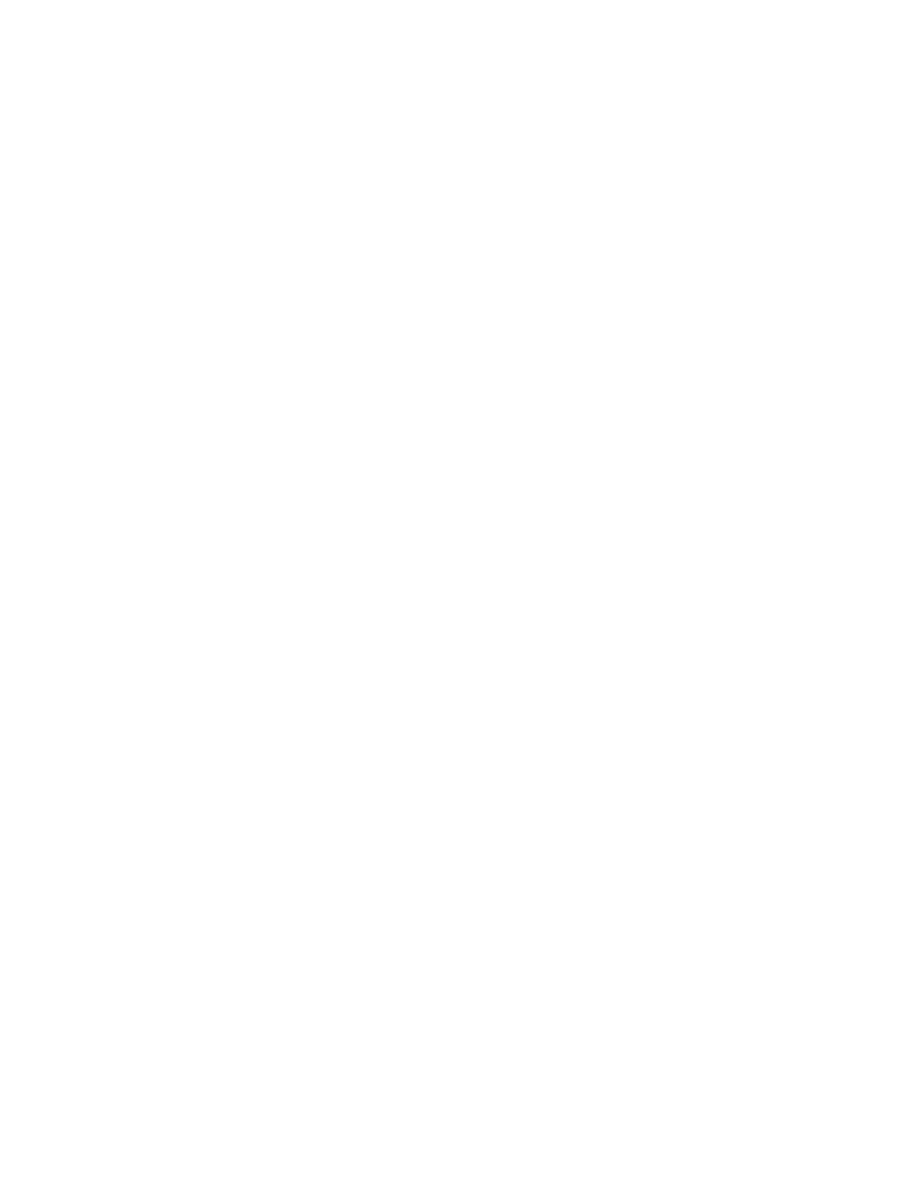
857
Federal Aviation Administration, DOT
Pt. 43, App. B
burner is designated as interchangeable in
the balloon type certificate data and the bas-
kets and burners are specifically designed for
quick removal and installation.
(28) The installations of anti-misfueling de-
vices to reduce the diameter of fuel tank
filler openings provided the specific device
has been made a part of the aircraft type
certificiate data by the aircraft manufac-
turer, the aircraft manufacturer has pro-
vided FAA-approved instructions for instal-
lation of the specific device, and installation
does not involve the disassembly of the ex-
isting tank filler opening.
(29) Removing, checking, and replacing
magnetic chip detectors.
(30) The inspection and maintenance tasks
prescribed and specifically identified as pre-
ventive maintenance in a primary category
aircraft type certificate or supplemental
type certificate holder’s approved special in-
spection and preventive maintenance pro-
gram when accomplished on a primary cat-
egory aircraft provided:
(i) They are performed by the holder of at
least a private pilot certificate issued under
part 61 of this chapter who is the registered
owner (including co-owners) of the affected
aircraft and who holds a certificate of com-
petency for the affected aircraft (1) issued by
the holder of the production certificate for
that primary category aircraft that has a
special training program approved under
§ 21.24 of this subchapter; or (2) issued by an-
other entity that has a course approved by
the Administrator; and
(ii) The inspections and maintenance tasks
are performed in accordance with instruc-
tions contained by the special inspection and
preventive maintenance program approved
as part of the aircraft’s type design or sup-
plemental type design.
(31) Removing and replacing self-con-
tained, front instrument panel-mounted
navigation and communication devices that
employ tray-mounted connectors that con-
nect the unit when the unit is installed into
the instrument panel, (excluding automatic
flight control systems, transponders, and
microwave frequency distance measuring
equipment (DME)). The approved unit must
be designed to be readily and repeatedly re-
moved and replaced, and pertinent instruc-
tions must be provided. Prior to the unit’s
intended use, and operational check must be
performed in accordance with the applicable
sections of part 91 of this chapter.
(Secs. 313, 601 through 610, and 1102, Federal
Aviation Act of 1958 as amended (49 U.S.C.
1354, 1421 through 1430 and 1502); (49 U.S.C.
106(g) (Revised Pub. L. 97–449, Jan. 21, 1983);
and 14 CFR 11.45)
[Doc. No. 1993, 29 FR 5451, Apr. 23, 1964, as
amended by Amdt. 43–14, 37 FR 14291, June
19, 1972; Amdt. 43–23, 47 FR 41086, Sept. 16,
1982; Amdt. 43–24, 49 FR 44602, Nov. 7, 1984;
Amdt. 43–25, 51 FR 40703, Nov. 7, 1986; Amdt.
43–27, 52 FR 17277, May 6, 1987; Amdt. 43–34, 57
FR 41369, Sept. 9, 1992; Amdt. 43–36, 61 FR
19501, May 1, 1996; Amdt. 43–45, 77 FR 71096,
Nov. 29, 2012; Docket No. FAA–2021–0237,
Amdt. No. 43–52, 87 FR 31414, May 24, 2022]
A
PPENDIX
B
TO
P
ART
43—R
ECORDING OF
M
AJOR
R
EPAIRS AND
M
AJOR
A
LTER
-
ATIONS
(a) Except as provided in paragraphs (b),
(c), and (d) of this appendix, each person per-
forming a major repair or major alteration
shall—
(1) Execute FAA Form 337 at least in dupli-
cate;
(2) Give a signed copy of that form to the
aircraft owner; and
(3) Forward a copy of that form to the FAA
Aircraft Registration Branch in Oklahoma
City, Oklahoma, within 48 hours after the
aircraft, airframe, aircraft engine, propeller,
or appliance is approved for return to serv-
ice.
(b) For major repairs made in accordance
with a manual or specifications acceptable
to the Administrator, a certificated repair
station may, in place of the requirements of
paragraph (a)—
(1) Use the customer’s work order upon
which the repair is recorded;
(2) Give the aircraft owner a signed copy of
the work order and retain a duplicate copy
for at least two years from the date of ap-
proval for return to service of the aircraft,
airframe, aircraft engine, propeller, or appli-
ance;
(3) Give the aircraft owner a maintenance
release signed by an authorized representa-
tive of the repair station and incorporating
the following information:
(i) Identity of the aircraft, airframe, air-
craft engine, propeller or appliance.
(ii) If an aircraft, the make, model, serial
number, nationality and registration marks,
and location of the repaired area.
(iii) If an airframe, aircraft engine, pro-
peller, or appliance, give the manufacturer’s
name, name of the part, model, and serial
numbers (if any); and
(4) Include the following or a similarly
worded statement—
VerDate Sep<11>2014
09:06 Jun 28, 2024
Jkt 262046
PO 00000
Frm 00867
Fmt 8010
Sfmt 8002
Y:\SGML\262046.XXX
262046
jspears on DSK121TN23PROD with CFR

858
14 CFR Ch. I (1–1–24 Edition)
Pt. 43, App. D
‘‘The aircraft, airframe, aircraft engine,
propeller, or appliance identified above was
repaired and inspected in accordance with
current Regulations of the Federal Aviation
Agency and is approved for return to service.
Pertinent details of the repair are on file
at this repair station under Order No.
___
,
Date
lllllllllllllllllllll
Signed
llllllllllllllllllll
For signature of authorized representative)
Repair station name)
(Certificate No.)
____________
.’’
(Address)
(c) Except as provided in paragraph (d) of
this appendix, for a major repair or major al-
teration made by a person authorized in
§ 43.17, the person who performs the major re-
pair or major alteration and the person au-
thorized by § 43.17 to approve that work shall
execute an FAA Form 337 at least in dupli-
cate. A completed copy of that form shall
be—
(1) Given to the aircraft owner; and
(2) Forwarded to the Federal Aviation Ad-
ministration, Aircraft Registration Branch,
Post Office Box 25504, Oklahoma City, OK
73125, within 48 hours after the work is in-
spected.
(d) For extended-range fuel tanks installed
within the passenger compartment or a bag-
gage compartment, the person who performs
the work and the person authorized to ap-
prove the work by § 43.7 shall execute an FAA
Form 337 in at least triplicate. A completed
copy of that form shall be—
(1) Placed on board the aircraft as specified
in § 91.417 of this chapter;
(2) Given to the aircraft owner; and
(3) Forwarded to the Federal Aviation Ad-
ministration, Aircraft Registration Branch, ,
Post Office Box 25724, Oklahoma City, OK
73125, within 48 hours after the work is in-
spected.
(Secs. 101, 610, 72 Stat. 737, 780, 49 U.S.C. 1301,
1430)
[Doc. No. 1993, 29 FR 5451, Apr. 23, 1964, as
amended by Amdt. 43–10, 33 FR 15989, Oct. 31,
1968; Amdt. 43–29, 52 FR 34101, Sept. 9, 1987;
Amdt. 43–31, 54 FR 34330, Aug. 18, 1989; 71 FR
58495, Oct. 4, 2006; Amdt. 43–41, 72 FR 53680,
Sept. 20, 2007; Doc. No. FAA–2018–0119, Amdt.
43–50, 83 FR 9170, Mar. 5, 2018]
A
PPENDIX
C
TO
P
ART
43 [R
ESERVED
]
A
PPENDIX
D
TO
P
ART
43—S
COPE AND
D
E
-
TAIL OF
I
TEMS
(
AS
A
PPLICABLE TO
THE
P
ARTICULAR
A
IRCRAFT
) T
O
B
E
I
NCLUDED IN
A
NNUAL AND
100-H
OUR
I
NSPECTIONS
(a) Each person performing an annual or
100-hour inspection shall, before that inspec-
tion, remove or open all necessary inspection
plates, access doors, fairing, and cowling. He
shall thoroughly clean the aircraft and air-
craft engine.
(b) Each person performing an annual or
100-hour inspection shall inspect (where ap-
plicable) the following components of the fu-
selage and hull group:
(1) Fabric and skin—for deterioration, dis-
tortion, other evidence of failure, and defec-
tive or insecure attachment of fittings.
(2) Systems and components—for improper
installation, apparent defects, and unsatis-
factory operation.
(3) Envelope, gas bags, ballast tanks, and
related parts—for poor condition.
(c) Each person performing an annual or
100-hour inspection shall inspect (where ap-
plicable) the following components of the
cabin and cockpit group:
(1) Generally—for uncleanliness and loose
equipment that might foul the controls.
(2) Seats and safety belts—for poor condi-
tion and apparent defects.
(3) Windows and windshields—for deterio-
ration and breakage.
(4) Instruments—for poor condition,
mounting, marking, and (where practicable)
improper operation.
(5) Flight and engine controls—for im-
proper installation and improper operation.
(6) Batteries—for improper installation and
improper charge.
(7) All systems—for improper installation,
poor general condition, apparent and obvious
defects, and insecurity of attachment.
(d) Each person performing an annual or
100-hour inspection shall inspect (where ap-
plicable) components of the engine and na-
celle group as follows:
(1) Engine section—for visual evidence of
excessive oil, fuel, or hydraulic leaks, and
sources of such leaks.
(2) Studs and nuts—for improper torquing
and obvious defects.
(3) Internal engine—for cylinder compres-
sion and for metal particles or foreign mat-
ter on screens and sump drain plugs. If there
is weak cylinder compression, for improper
internal condition and improper internal tol-
erances.
(4) Engine mount—for cracks, looseness of
mounting, and looseness of engine to mount.
(5) Flexible vibration dampeners—for poor
condition and deterioration.
(6) Engine controls—for defects, improper
travel, and improper safetying.
(7) Lines, hoses, and clamps—for leaks, im-
proper condition and looseness.
(8) Exhaust stacks—for cracks, defects, and
improper attachment.
(9) Accessories—for apparent defects in se-
curity of mounting.
(10) All systems—for improper installation,
poor general condition, defects, and insecure
attachment.
(11) Cowling—for cracks, and defects.
VerDate Sep<11>2014
09:06 Jun 28, 2024
Jkt 262046
PO 00000
Frm 00868
Fmt 8010
Sfmt 8002
Y:\SGML\262046.XXX
262046
jspears on DSK121TN23PROD with CFR

859
Federal Aviation Administration, DOT
Pt. 43, App. E
(e) Each person performing an annual or
100-hour inspection shall inspect (where ap-
plicable) the following components of the
landing gear group:
(1) All units—for poor condition and inse-
curity of attachment.
(2) Shock absorbing devices—for improper
oleo fluid level.
(3) Linkages, trusses, and members—for
undue or excessive wear fatigue, and distor-
tion.
(4) Retracting and locking mechanism—for
improper operation.
(5) Hydraulic lines—for leakage.
(6) Electrical system—for chafing and im-
proper operation of switches.
(7) Wheels—for cracks, defects, and condi-
tion of bearings.
(8) Tires—for wear and cuts.
(9) Brakes—for improper adjustment.
(10) Floats and skis—for insecure attach-
ment and obvious or apparent defects.
(f) Each person performing an annual or
100-hour inspection shall inspect (where ap-
plicable) all components of the wing and cen-
ter section assembly for poor general condi-
tion, fabric or skin deterioration, distortion,
evidence of failure, and insecurity of attach-
ment.
(g) Each person performing an annual or
100-hour inspection shall inspect (where ap-
plicable) all components and systems that
make up the complete empennage assembly
for poor general condition, fabric or skin de-
terioration, distortion, evidence of failure,
insecure attachment, improper component
installation, and improper component oper-
ation.
(h) Each person performing an annual or
100-hour inspection shall inspect (where ap-
plicable) the following components of the
propeller group:
(1) Propeller assembly—for cracks, nicks,
binds, and oil leakage.
(2) Bolts—for improper torquing and lack
of safetying.
(3) Anti-icing devices—for improper oper-
ations and obvious defects.
(4) Control mechanisms—for improper op-
eration, insecure mounting, and restricted
travel.
(i) Each person performing an annual or
100-hour inspection shall inspect (where ap-
plicable) the following components of the
radio group:
(1) Radio and electronic equipment—for
improper installation and insecure mount-
ing.
(2) Wiring and conduits—for improper rout-
ing, insecure mounting, and obvious defects.
(3) Bonding and shielding—for improper in-
stallation and poor condition.
(4) Antenna including trailing antenna—for
poor condition, insecure mounting, and im-
proper operation.
(j) Each person performing an annual or
100-hour inspection shall inspect (where ap-
plicable) each installed miscellaneous item
that is not otherwise covered by this listing
for improper installation and improper oper-
ation.
A
PPENDIX
E
TO
P
ART
43—A
LTIMETER
S
YSTEM
T
EST AND
I
NSPECTION
Each person performing the altimeter sys-
tem tests and inspections required by § 91.411
of this chapter must comply with the fol-
lowing:
(a) Static pressure system:
(1) Ensure freedom from entrapped mois-
ture and restrictions.
(2) Perform a proof test to demonstrate the
integrity of the static pressure system in a
manner acceptable to the Administrator. For
airplanes certificated under part 25 of this
chapter, determine that leakage is within
the tolerances established by § 25.1325.
(3) Determine that the static port heater,
if installed, is operative.
(4) Ensure that no alterations or deforma-
tions of the airframe surface have been made
that would affect the relationship between
air pressure in the static pressure system
and true ambient static air pressure for any
flight condition.
(b) Altimeter:
(1) Test by an appropriately rated repair
facility in accordance with the following
subparagraphs. Unless otherwise specified,
each test for performance may be conducted
with the instrument subjected to vibration.
When tests are conducted with the tempera-
ture substantially different from ambient
temperature of approximately 25 degrees C.,
allowance shall be made for the variation
from the specified condition.
(i)
Scale error. With the barometric pres-
sure scale at 29.92 inches of mercury, the al-
timeter shall be subjected successively to
pressures corresponding to the altitude spec-
ified in Table I up to the maximum normally
expected operating altitude of the airplane
in which the altimeter is to be installed. The
reduction in pressure shall be made at a rate
not in excess of 20,000 feet per minute to
within approximately 2,000 feet of the test
point. The test point shall be approached at
a rate compatible with the test equipment.
The altimeter shall be kept at the pressure
corresponding to each test point for at least
1 minute, but not more than 10 minutes, be-
fore a reading is taken. The error at all test
points must not exceed the tolerances speci-
fied in Table I.
(ii)
Hysteresis. The hysteresis test shall
begin not more than 15 minutes after the al-
timeter’s initial exposure to the pressure
corresponding to the upper limit of the scale
error test prescribed in subparagraph (i); and
while the altimeter is at this pressure, the
hysteresis test shall commence. Pressure
shall be increased at a rate simulating a de-
scent in altitude at the rate of 5,000 to 20,000
VerDate Sep<11>2014
09:06 Jun 28, 2024
Jkt 262046
PO 00000
Frm 00869
Fmt 8010
Sfmt 8002
Y:\SGML\262046.XXX
262046
jspears on DSK121TN23PROD with CFR
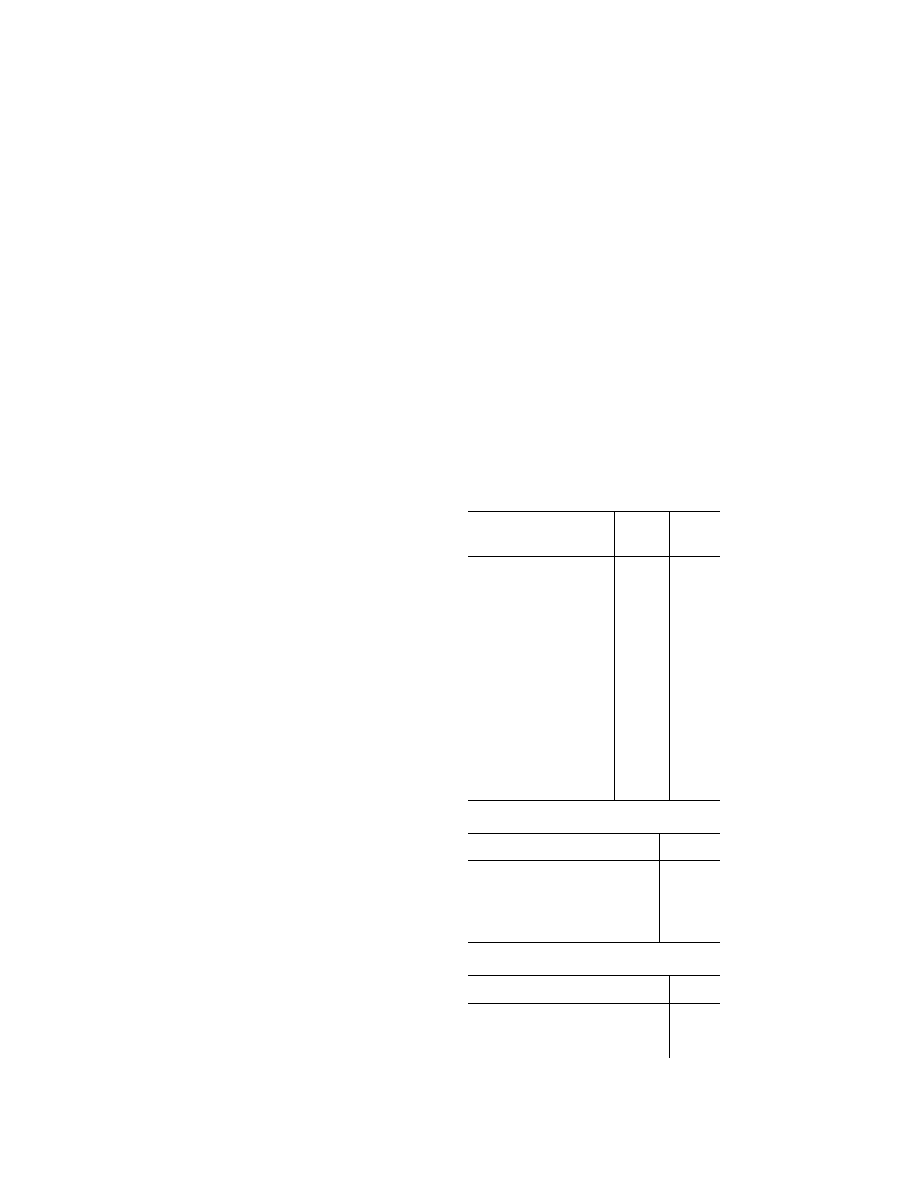
860
14 CFR Ch. I (1–1–24 Edition)
Pt. 43, App. E
feet per minute until within 3,000 feet of the
first test point (50 percent of maximum alti-
tude). The test point shall then be ap-
proached at a rate of approximately 3,000
feet per minute. The altimeter shall be kept
at this pressure for at least 5 minutes, but
not more than 15 minutes, before the test
reading is taken. After the reading has been
taken, the pressure shall be increased fur-
ther, in the same manner as before, until the
pressure corresponding to the second test
point (40 percent of maximum altitude) is
reached. The altimeter shall be kept at this
pressure for at least 1 minute, but not more
than 10 minutes, before the test reading is
taken. After the reading has been taken, the
pressure shall be increased further, in the
same manner as before, until atmospheric
pressure is reached. The reading of the al-
timeter at either of the two test points shall
not differ by more than the tolerance speci-
fied in Table II from the reading of the al-
timeter for the corresponding altitude re-
corded during the scale error test prescribed
in paragraph (b)(i).
(iii)
After effect. Not more than 5 minutes
after the completion of the hysteresis test
prescribed in paragraph (b)(ii), the reading of
the altimeter (corrected for any change in
atmospheric pressure) shall not differ from
the original atmospheric pressure reading by
more than the tolerance specified in Table
II.
(iv)
Friction. The altimeter shall be sub-
jected to a steady rate of decrease of pres-
sure approximating 750 feet per minute. At
each altitude listed in Table III, the change
in reading of the pointers after vibration
shall not exceed the corresponding tolerance
listed in Table III.
(v)
Case leak. The leakage of the altimeter
case, when the pressure within it cor-
responds to an altitude of 18,000 feet, shall
not change the altimeter reading by more
than the tolerance shown in Table II during
an interval of 1 minute.
(vi)
Barometric scale error. At constant at-
mospheric pressure, the barometric pressure
scale shall be set at each of the pressures
(falling within its range of adjustment) that
are listed in Table IV, and shall cause the
pointer to indicate the equivalent altitude
difference shown in Table IV with a toler-
ance of 25 feet.
(2) Altimeters which are the air data com-
puter type with associated computing sys-
tems, or which incorporate air data correc-
tion internally, may be tested in a manner
and to specifications developed by the manu-
facturer which are acceptable to the Admin-
istrator.
(c) Automatic Pressure Altitude Reporting
Equipment and ATC Transponder System In-
tegration Test. The test must be conducted
by an appropriately rated person under the
conditions specified in paragraph (a). Meas-
ure the automatic pressure altitude at the
output of the installed ATC transponder
when interrogated on Mode C at a sufficient
number of test points to ensure that the alti-
tude reporting equipment, altimeters, and
ATC transponders perform their intended
functions as installed in the aircraft. The
difference between the automatic reporting
output and the altitude displayed at the al-
timeter shall not exceed 125 feet.
(d) Records: Comply with the provisions of
§ 43.9 of this chapter as to content, form, and
disposition of the records. The person per-
forming the altimeter tests shall record on
the altimeter the date and maximum alti-
tude to which the altimeter has been tested
and the persons approving the airplane for
return to service shall enter that data in the
airplane log or other permanent record.
T
ABLE
I
Altitude
Equivalent
pressure
(inches of
mercury)
Tolerance
±
(feet)
¥
1,000 ..........................................
31.018 20
0 .....................................................
29.921 20
500 .................................................
29.385 20
1,000 ..............................................
28.856 20
1,500 ..............................................
28.335 25
2,000 ..............................................
27.821 30
3,000 ..............................................
26.817 30
4,000 ..............................................
25.842 35
6,000 ..............................................
23.978 40
8,000 ..............................................
22.225 60
10,000 ............................................
20.577 80
12,000 ............................................
19.029 90
14,000 ............................................
17.577 100
16,000 ............................................
16.216 110
18,000 ............................................
14.942 120
20,000 ............................................
13.750 130
22,000 ............................................
12.636 140
25,000 ............................................
11.104 155
30,000 ............................................
8.885 180
35,000 ............................................
7.041 205
40,000 ............................................
5.538 230
45,000 ............................................
4.355 255
50,000 ............................................
3.425 280
T
ABLE
II—T
EST
T
OLERANCES
Test
Tolerance
(feet)
Case Leak Test ...............................................
±
100
Hysteresis Test:
First Test Point (50 percent of maximum
altitude) .................................................
75
Second Test Point (40 percent of max-
imum altitude) .......................................
75
After Effect Test ...............................................
30
T
ABLE
III—F
RICTION
Altitude (feet)
Tolerance
(feet)
1,000 ....................................................................
±
70
2,000 ....................................................................
70
3,000 ....................................................................
70
5,000 ....................................................................
70
10,000 ..................................................................
80
VerDate Sep<11>2014
09:06 Jun 28, 2024
Jkt 262046
PO 00000
Frm 00870
Fmt 8010
Sfmt 8002
Y:\SGML\262046.XXX
262046
jspears on DSK121TN23PROD with CFR
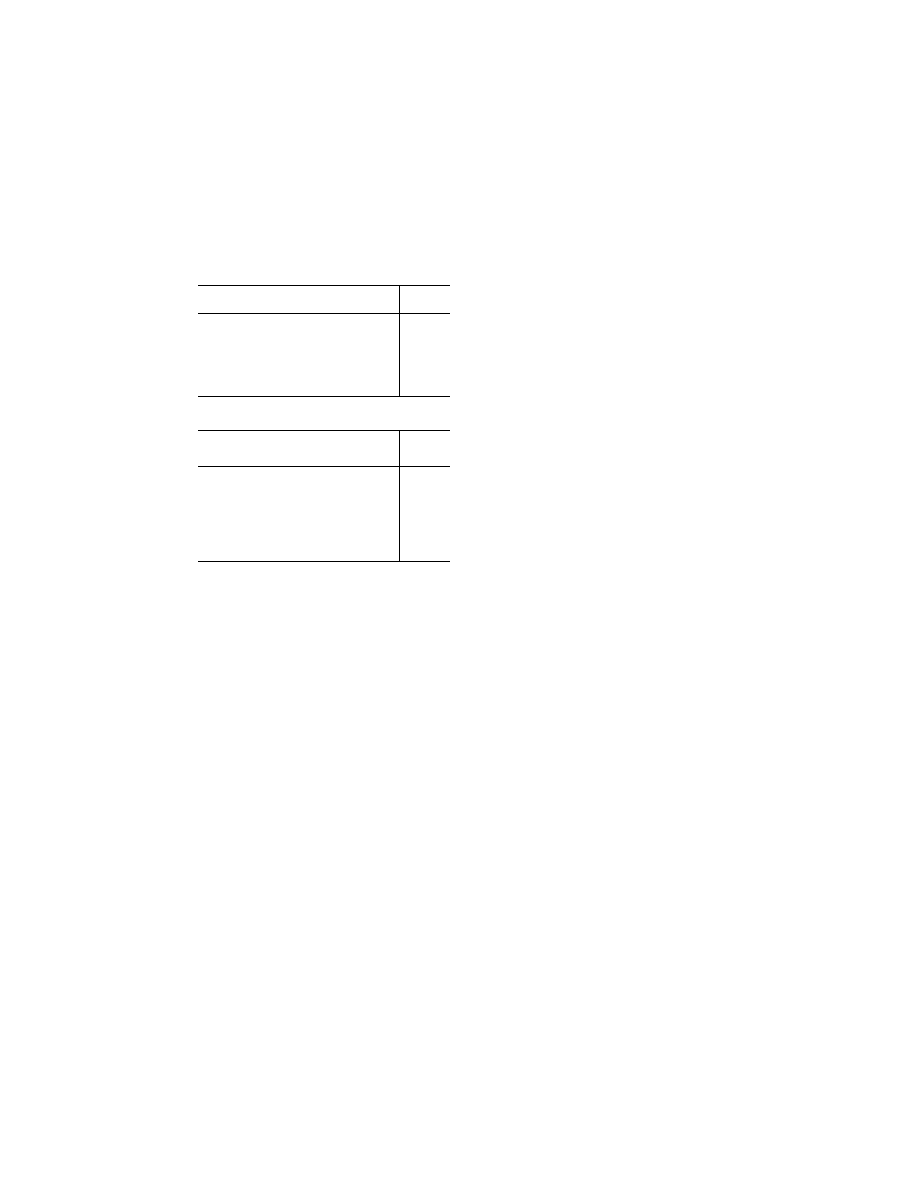
861
Federal Aviation Administration, DOT
Pt. 43, App. F
T
ABLE
III—F
RICTION
—Continued
Altitude (feet)
Tolerance
(feet)
15,000 ..................................................................
90
20,000 ..................................................................
100
25,000 ..................................................................
120
30,000 ..................................................................
140
35,000 ..................................................................
160
40,000 ..................................................................
180
50,000 ..................................................................
250
T
ABLE
IV—P
RESSURE
-A
LTITUDE
D
IFFERENCE
Pressure (inches of Hg)
Altitude dif-
ference
(feet)
28.10 ....................................................................
¥
1,727
28.50 ....................................................................
¥
1,340
29.00 ....................................................................
¥
863
29.50 ....................................................................
¥
392
29.92 ....................................................................
0
30.50 ....................................................................
+ 531
30.90 ....................................................................
+ 893
30.99 ....................................................................
+ 974
(Secs. 313, 314, and 601 through 610 of the Fed-
eral Aviation Act of 1958 (49 U.S.C. 1354, 1355,
and 1421 through 1430) and sec. 6(c), Dept. of
Transportation Act (49 U.S.C. 1655(c)))
[Amdt. 43–2, 30 FR 8262, June 29, 1965, as
amended by Amdt. 43–7, 32 FR 7587, May 24,
1967; Amdt. 43–19, 43 FR 22639, May 25, 1978;
Amdt. 43–23, 47 FR 41086, Sept. 16, 1982; Amdt.
43–31, 54 FR 34330, Aug. 18, 1989; Doc. No.
FAA–2015–1621, Amdt. 43–49, 81 FR 96700, Dec.
30, 2016]
A
PPENDIX
F
TO
P
ART
43—ATC
T
RANSPONDER
T
ESTS AND
I
NSPECTIONS
The ATC transponder tests required by
§ 91.413 of this chapter may be conducted
using a bench check or portable test equip-
ment and must meet the requirements pre-
scribed in paragraphs (a) through (j) of this
appendix. If portable test equipment with ap-
propriate coupling to the aircraft antenna
system is used, operate the test equipment
for ATCRBS transponders at a nominal rate
of 235 interrogations per second to avoid pos-
sible ATCRBS interference. Operate the test
equipment at a nominal rate of 50 Mode S in-
terrogations per second for Mode S. An addi-
tional 3 dB loss is allowed to compensate for
antenna coupling errors during receiver sen-
sitivity measurements conducted in accord-
ance with paragraph (c)(1) when using port-
able test equipment.
(a) Radio Reply Frequency:
(1) For all classes of ATCRBS tran-
sponders, interrogate the transponder and
verify that the reply frequency is 1090
±
3
Megahertz (MHz).
(2) For classes 1B, 2B, and 3B Mode S tran-
sponders, interrogate the transponder and
verify that the reply frequency is 1090
±
3
MHz.
(3) For classes 1B, 2B, and 3B Mode S tran-
sponders that incorporate the optional 1090
±
1 MHz reply frequency, interrogate the
transponder and verify that the reply fre-
quency is correct.
(4) For classes 1A, 2A, 3A, and 4 Mode S
transponders, interrogate the transponder
and verify that the reply frequency is 1090
±
1
MHz.
(b) Suppression: When Classes 1B and 2B
ATCRBS Transponders, or Classes 1B, 2B,
and 3B Mode S transponders are interrogated
Mode 3/A at an interrogation rate between
230 and 1,000 interrogations per second; or
when Classes 1A and 2A ATCRBS Tran-
sponders, or Classes 1B, 2A, 3A, and 4 Mode S
transponders are interrogated at a rate be-
tween 230 and 1,200 Mode 3/A interrogations
per second:
(1) Verify that the transponder does not re-
spond to more than 1 percent of ATCRBS in-
terrogations when the amplitude of P
2
pulse
is equal to the P
1
pulse.
(2) Verify that the transponder replies to
at least 90 percent of ATCRBS interrogations
when the amplitude of the P
2
pulse is 9 dB
less than the P
1
pulse. If the test is con-
ducted with a radiated test signal, the inter-
rogation rate shall be 235
±
5 interrogations
per second unless a higher rate has been ap-
proved for the test equipment used at that
location.
(c) Receiver Sensitivity:
(1) Verify that for any class of ATCRBS
Transponder, the receiver minimum trig-
gering level (MTL) of the system is
¥
73
±
4
dbm, or that for any class of Mode S trans-
ponder the receiver MTL for Mode S format
(P6 type) interrogations is
¥
74
±
3 dbm by use
of a test set either:
(i) Connected to the antenna end of the
transmission line;
(ii) Connected to the antenna terminal of
the transponder with a correction for trans-
mission line loss; or
(iii) Utilized radiated signal.
(2) Verify that the difference in Mode 3/A
and Mode C receiver sensitivity does not ex-
ceed 1 db for either any class of ATCRBS
transponder or any class of Mode S trans-
ponder.
(d) Radio Frequency (RF) Peak Output
Power:
(1) Verify that the transponder RF output
power is within specifications for the class of
transponder. Use the same conditions as de-
scribed in (c)(1)(i), (ii), and (iii) above.
(i) For Class 1A and 2A ATCRBS tran-
sponders, verify that the minimum RF peak
output power is at least 21.0 dbw (125 watts).
(ii) For Class 1B and 2B ATCRBS Tran-
sponders, verify that the minimum RF peak
output power is at least 18.5 dbw (70 watts).
(iii) For Class 1A, 2A, 3A, and 4 and those
Class 1B, 2B, and 3B Mode S transponders
VerDate Sep<11>2014
09:06 Jun 28, 2024
Jkt 262046
PO 00000
Frm 00871
Fmt 8010
Sfmt 8002
Y:\SGML\262046.XXX
262046
jspears on DSK121TN23PROD with CFR
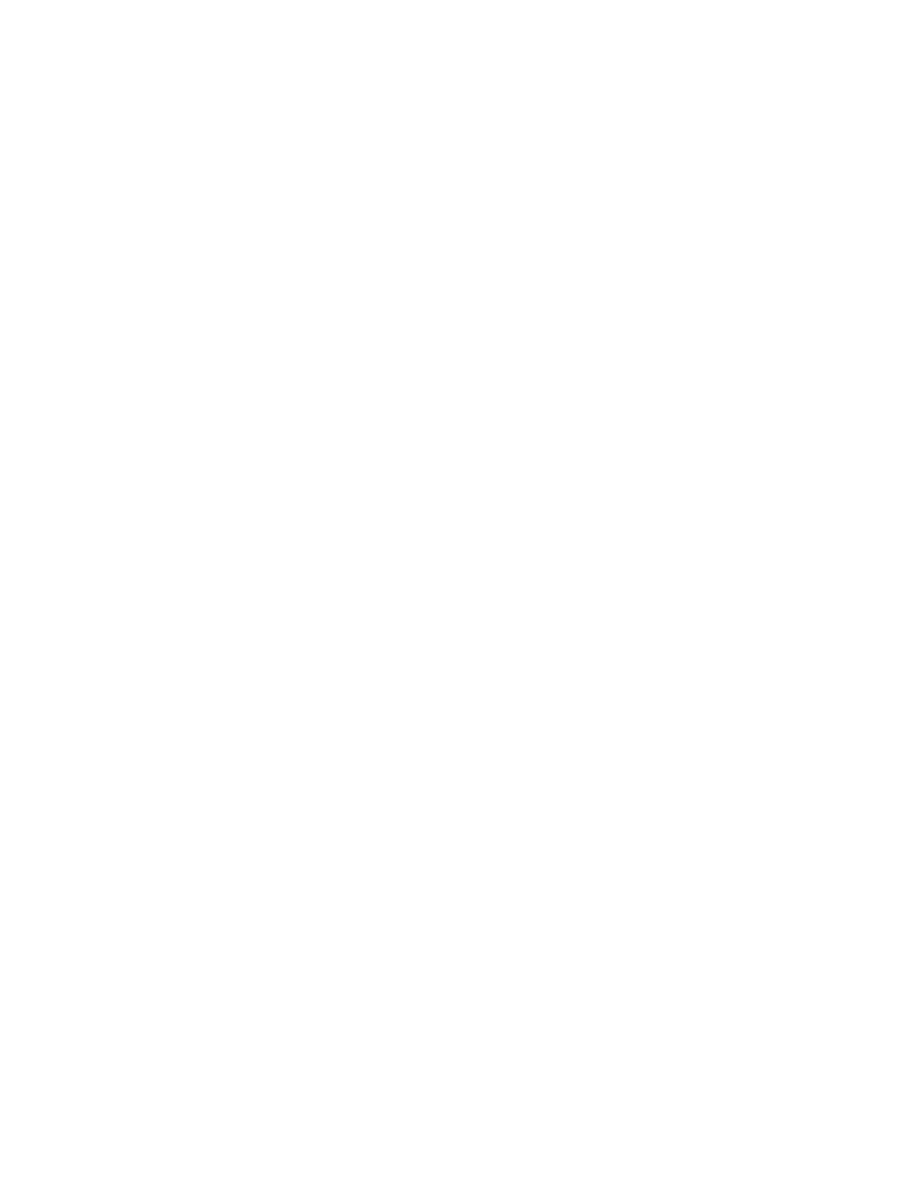
862
14 CFR Ch. I (1–1–24 Edition)
Pt. 45
that include the optional high RF peak out-
put power, verify that the minimum RF peak
output power is at least 21.0 dbw (125 watts).
(iv) For Classes 1B, 2B, and 3B Mode S
transponders, verify that the minimum RF
peak output power is at least 18.5 dbw (70
watts).
(v) For any class of ATCRBS or any class
of Mode S transponders, verify that the max-
imum RF peak output power does not exceed
27.0 dbw (500 watts).
N
OTE
: The tests in (e) through (j) apply
only to Mode S transponders.
(e) Mode S Diversity Transmission Channel
Isolation: For any class of Mode S trans-
ponder that incorporates diversity operation,
verify that the RF peak output power trans-
mitted from the selected antenna exceeds
the power transmitted from the nonselected
antenna by at least 20 db.
(f) Mode S Address: Interrogate the Mode S
transponder and verify that it replies only to
its assigned address. Use the correct address
and at least two incorrect addresses. The in-
terrogations should be made at a nominal
rate of 50 interrogations per second.
(g) Mode S Formats: Interrogate the Mode
S transponder with uplink formats (UF) for
which it is equipped and verify that the re-
plies are made in the correct format. Use the
surveillance formats UF = 4 and 5. Verify
that the altitude reported in the replies to
UF = 4 are the same as that reported in a
valid ATCRBS Mode C reply. Verify that the
identity reported in the replies to UF = 5 are
the same as that reported in a valid ATCRBS
Mode 3/A reply. If the transponder is so
equipped, use the communication formats
UF = 20, 21, and 24.
(h) Mode S All-Call Interrogations: Inter-
rogate the Mode S transponder with the
Mode S-only all-call format UF = 11 and
verify that the correct address and capa-
bility are reported in the replies (downlink
format DF = 11).
(i) ATCRBS-Only All-Call Interrogation:
Interrogate the Mode S transponder with the
ATCRBS-only all-call interrogation (0.8
microsecond P
4
pulse) and verify that no
reply is generated.
(j) Squitter: Verify that the Mode S trans-
ponder generates a correct acquisition
squitter approximately once per second.
(k) Records: Comply with the provisions of
§ 43.9 of this chapter as to content, form, and
disposition of the records.
[Amdt. 43–26, 52 FR 3390, Feb. 3, 1987; 52 FR
6651, Mar. 4, 1987, as amended by Amdt. 43–31,
54 FR 34330, Aug. 18, 1989; Amdt. 43–53, 88 FR
71476, Oct. 17, 2023]
PART 45—IDENTIFICATION AND
REGISTRATION MARKING
Subpart A—General
Sec.
45.1
Applicability.
Subpart B—Marking of Products and
Articles
45.10
Marking.
45.11
Marking of products.
45.13
Identification data.
45.15
Marking requirements for PMA arti-
cles, TSO articles, and Critical parts.
45.16
Marking of life-limited parts.
Subpart C—Nationality and Registration
Marks
45.21
General.
45.22
Exhibition, antique, and other air-
craft: Special rules.
45.23
Display of marks; general.
45.25
Location of marks on fixed-wing air-
craft.
45.27
Location of marks; nonfixed-wing air-
craft.
45.29
Size of marks.
45.31
Marking of export aircraft.
45.33
Sale of aircraft; removal of marks.
A
UTHORITY
: 49 U.S.C. 106(f), 106(g), 40103,
40113–40114, 44101–44105, 44107–44111, 44504,
44701, 44708–44709, 44711–44713, 44725, 45302–
45303, 46104, 46304, 46306, 47122.
S
OURCE
: Docket No. 2047, 29 FR 3223, Mar.
11, 1964, unless otherwise noted.
E
DITORIAL
N
OTE
: Nomenclature changes to
part 45 appear at 74 FR 53394, Oct. 16, 2009.
Subpart A—General
§ 45.1
Applicability.
This part prescribes the requirements
for—
(a) Marking products and articles
manufactured under—
(1) A type certificate;
(2) A production approval as defined
under part 21 of this chapter; and
(3) The provisions of an agreement
between the United States and another
country or jurisdiction for the accept-
ance of products and articles; and
(b) Nationality and registration
marking of aircraft registered in the
VerDate Sep<11>2014
09:06 Jun 28, 2024
Jkt 262046
PO 00000
Frm 00872
Fmt 8010
Sfmt 8010
Y:\SGML\262046.XXX
262046
jspears on DSK121TN23PROD with CFR
















